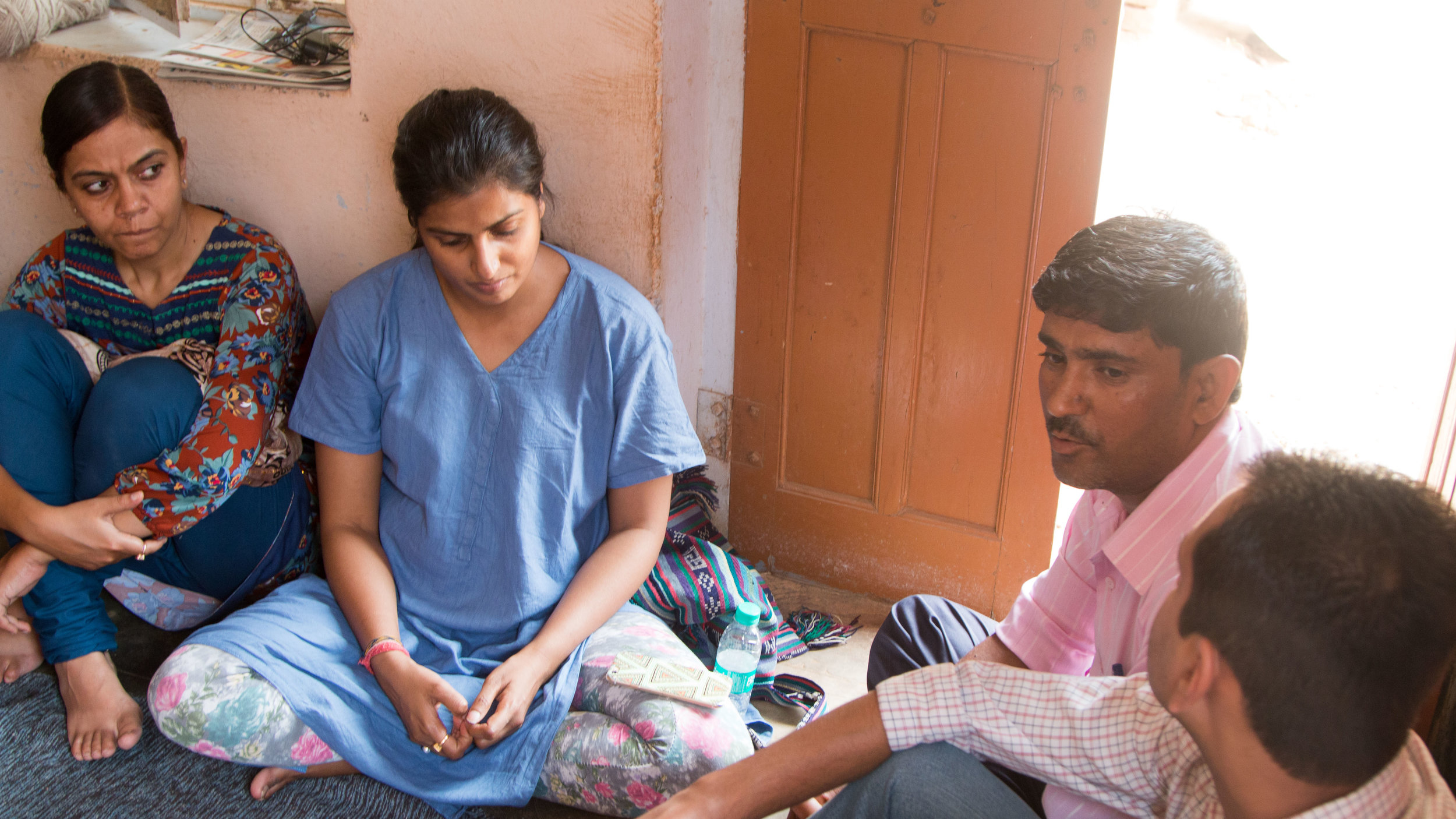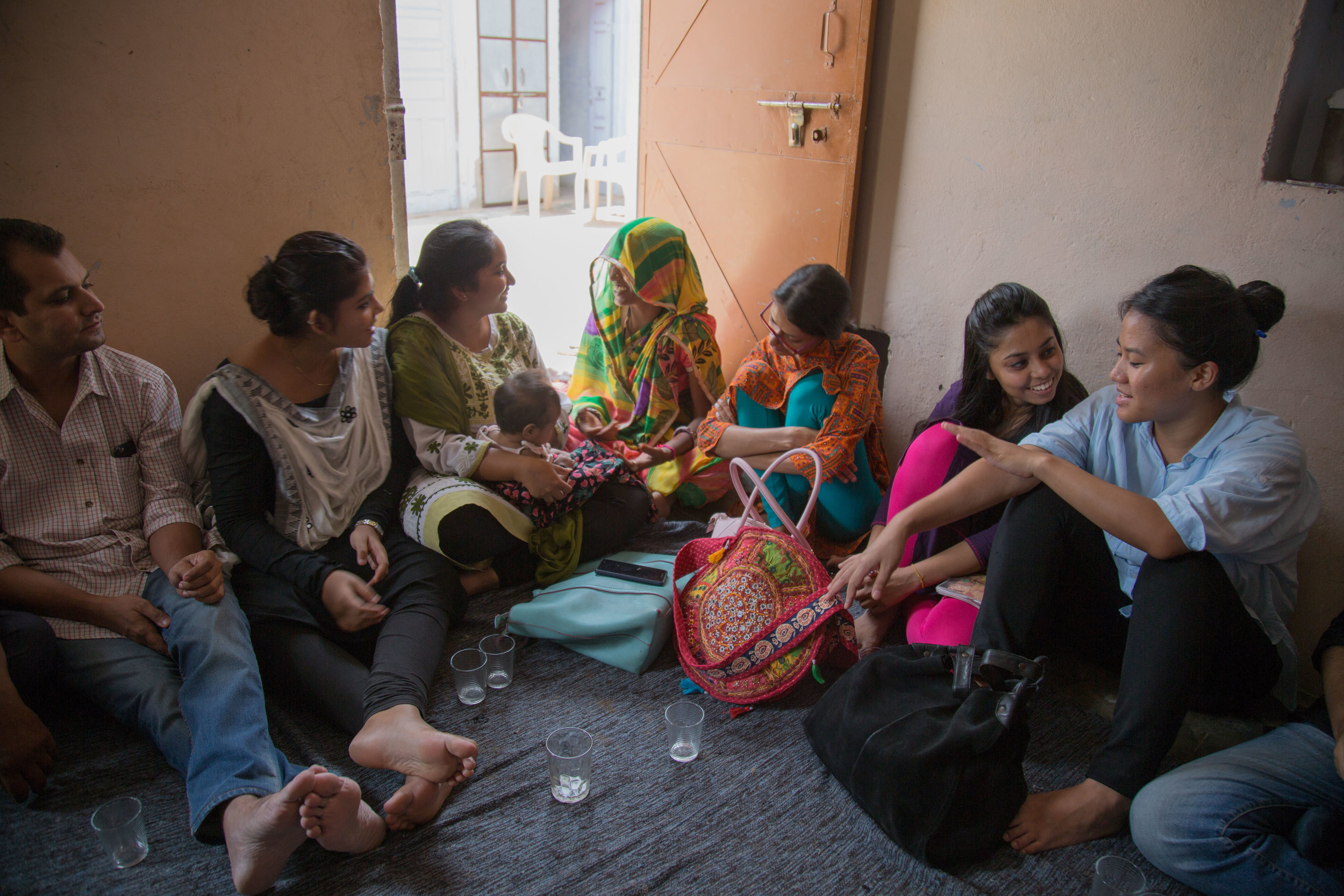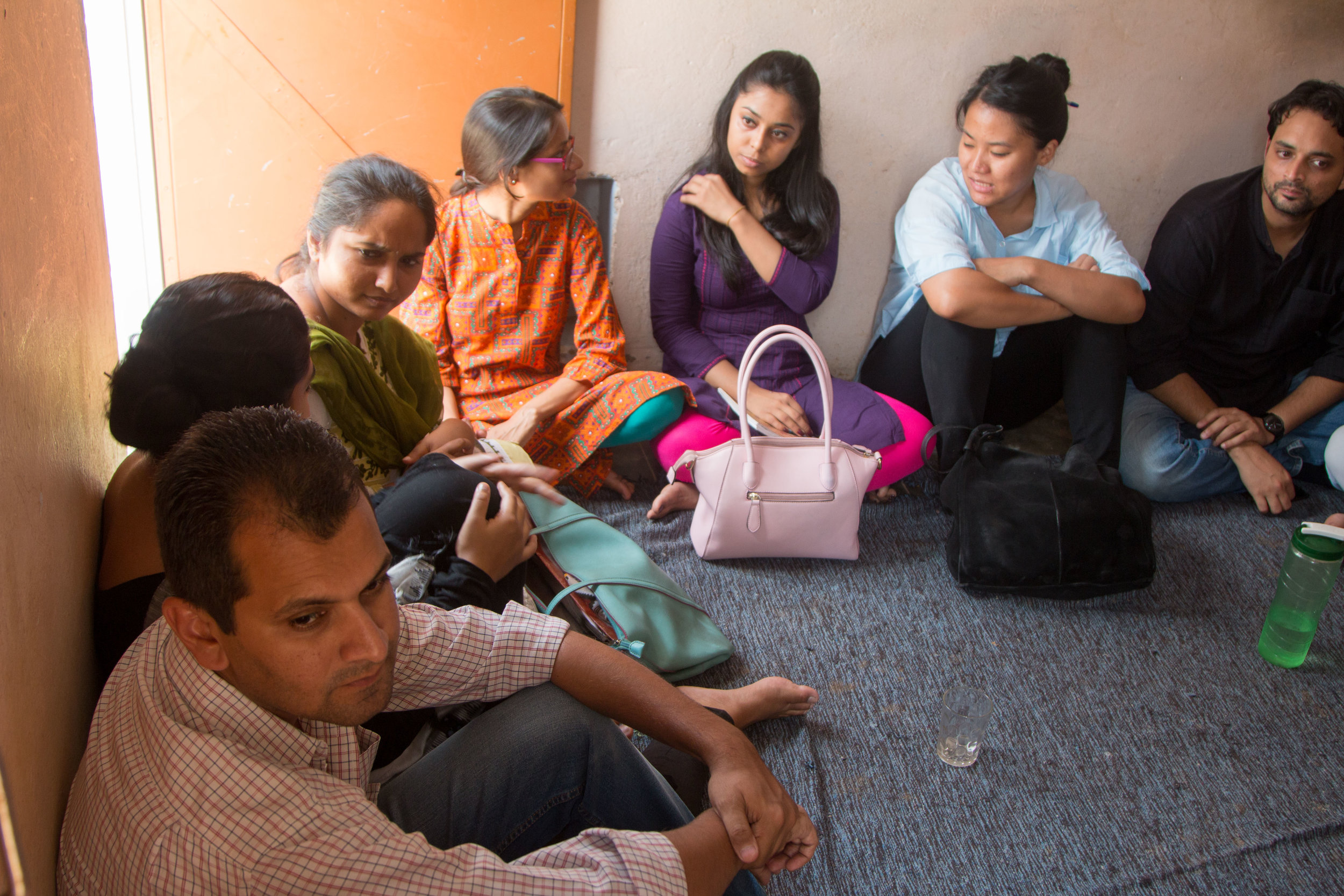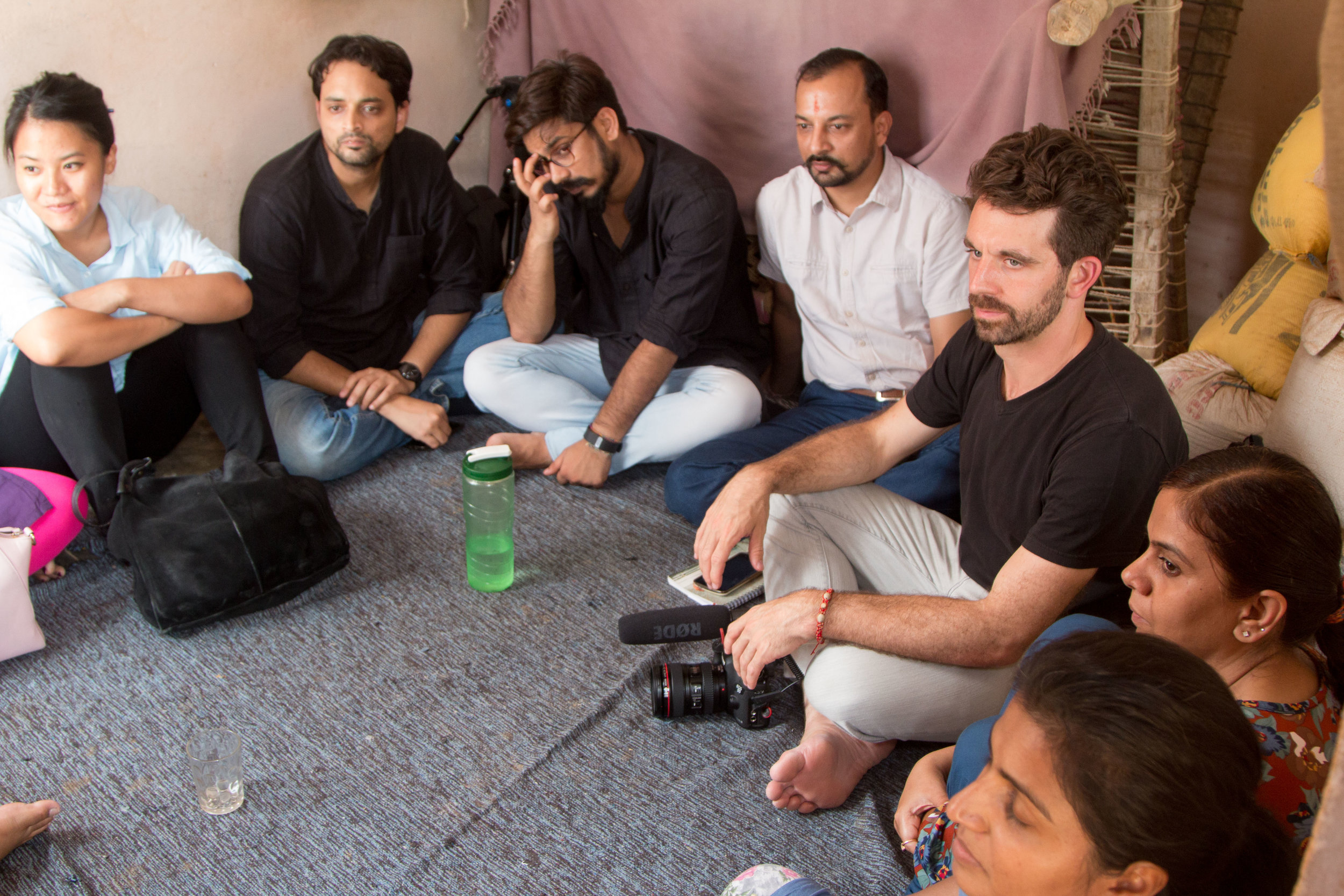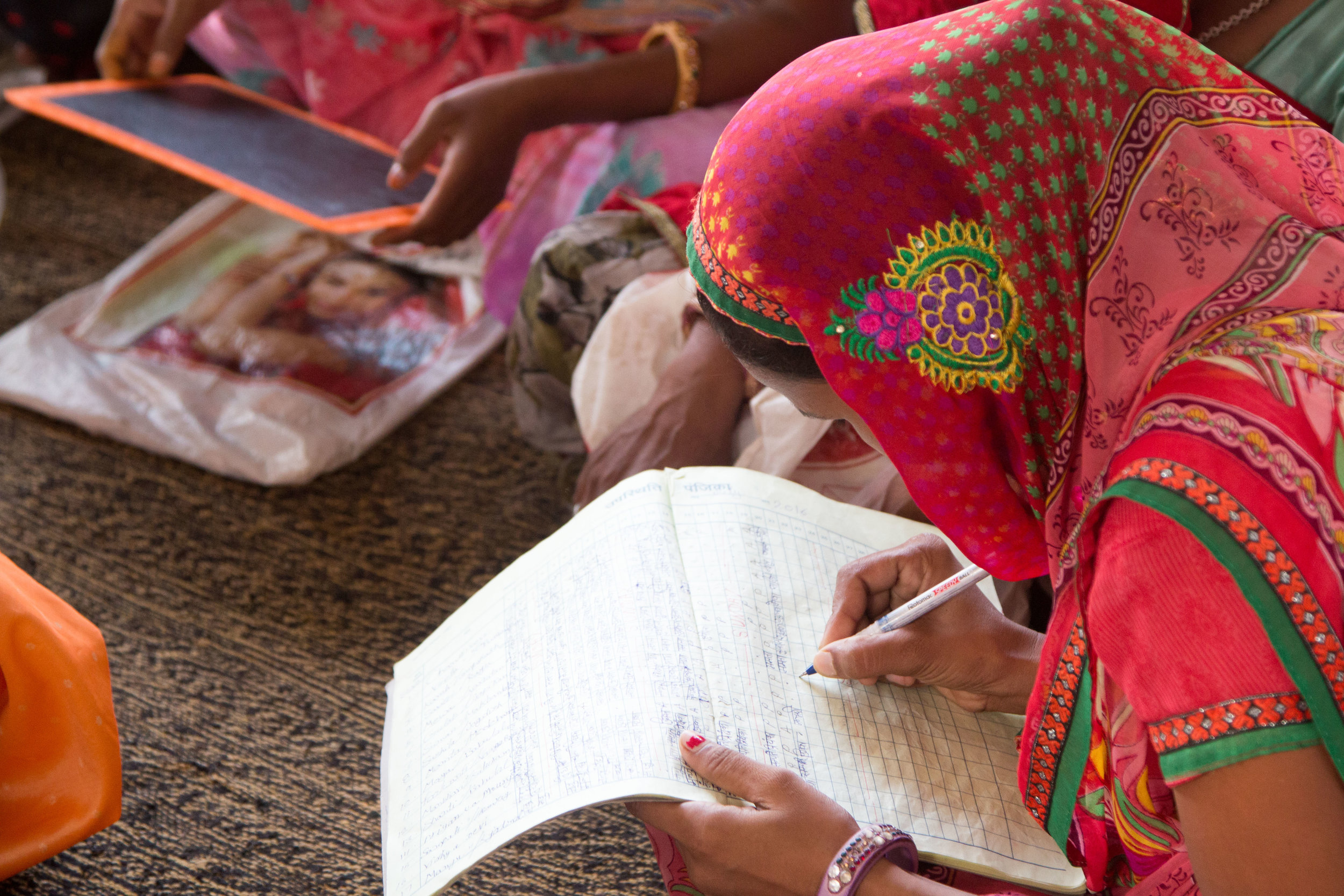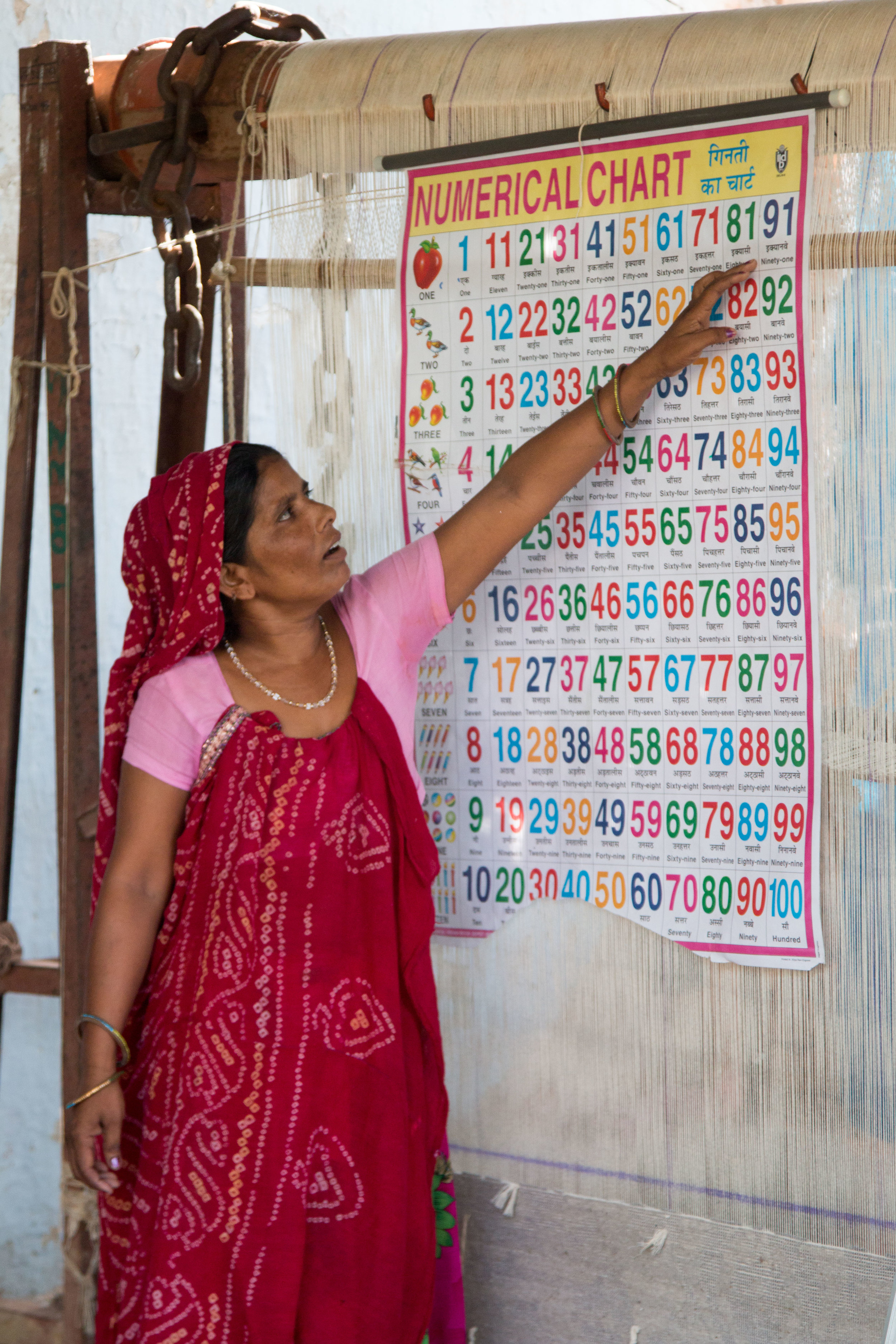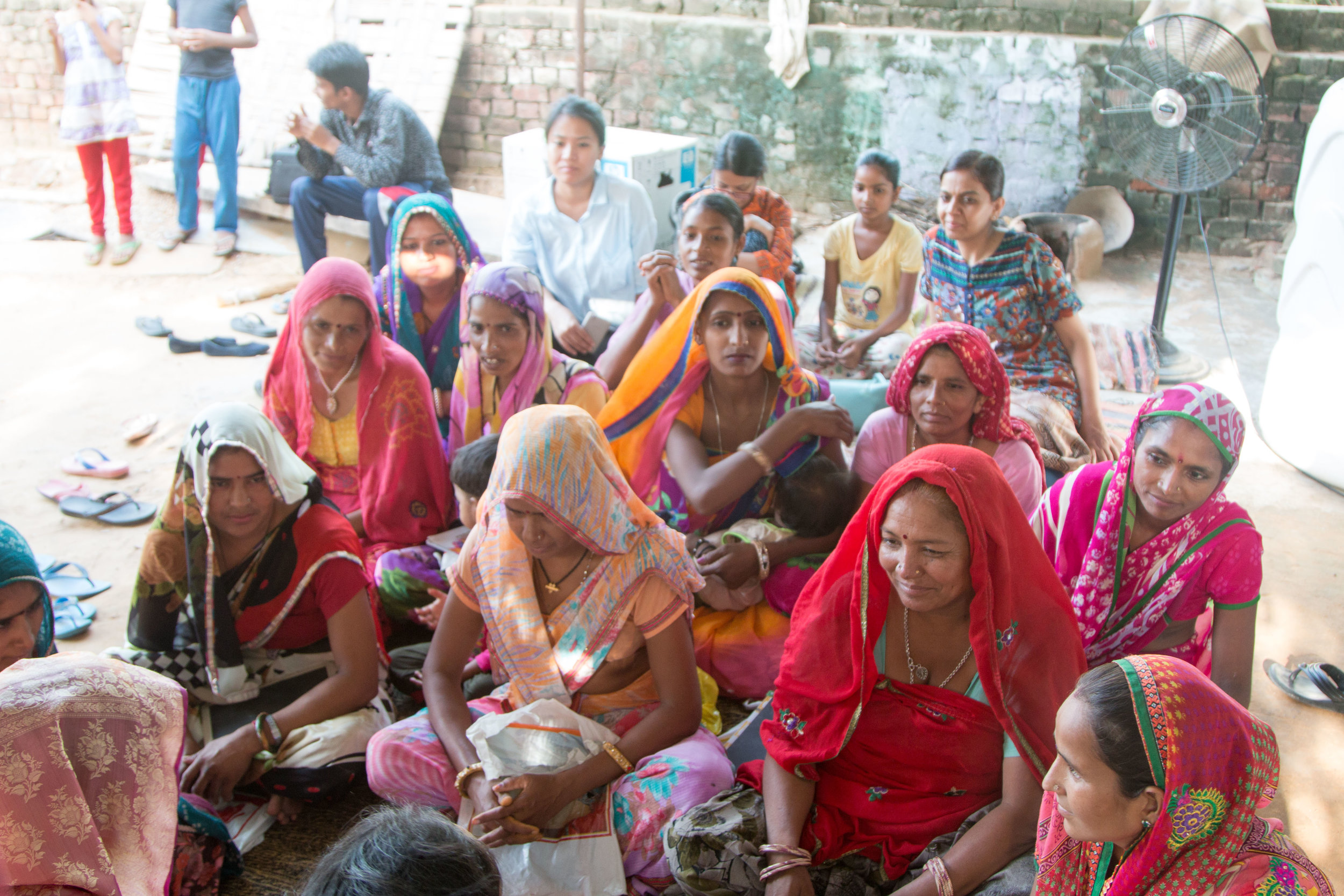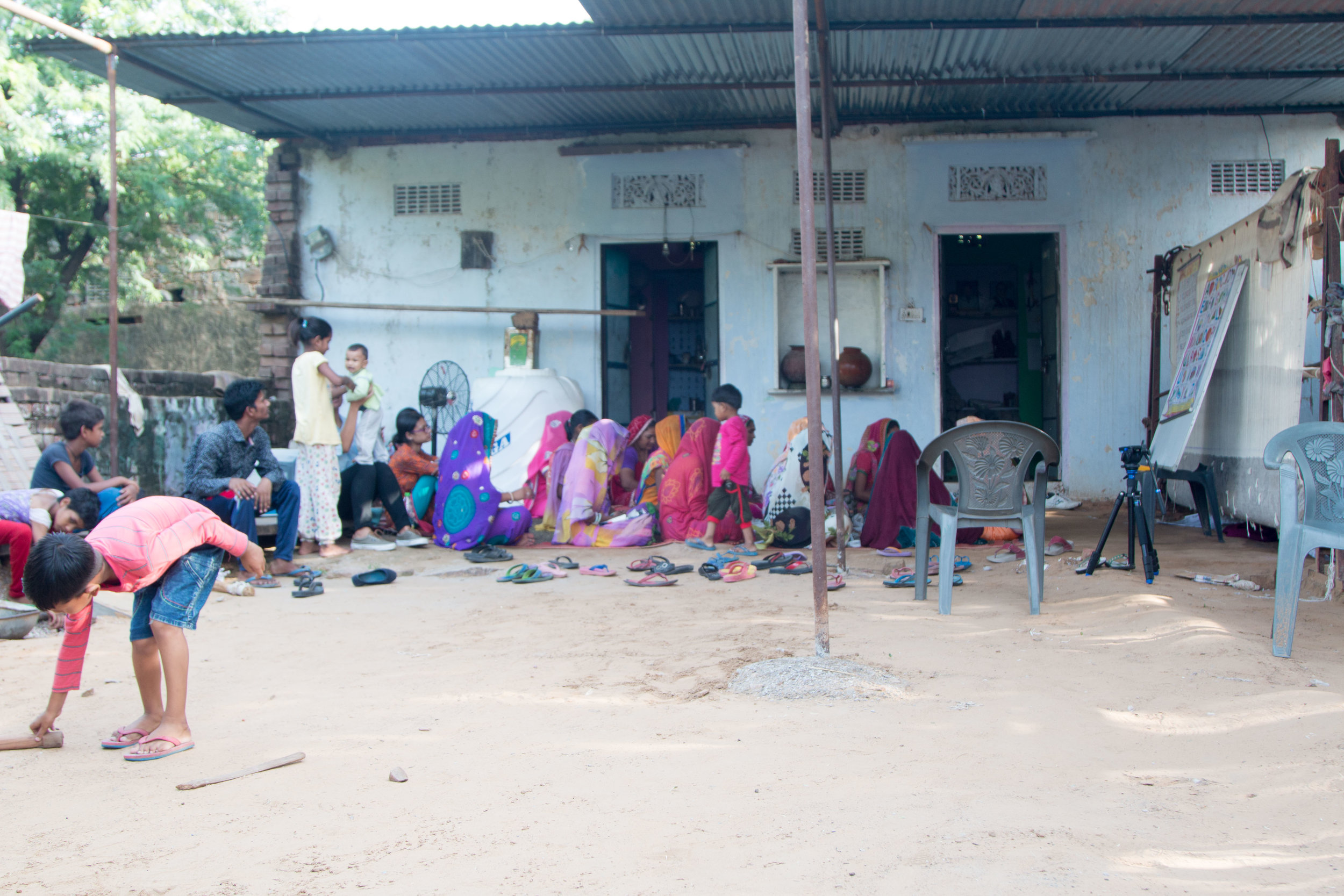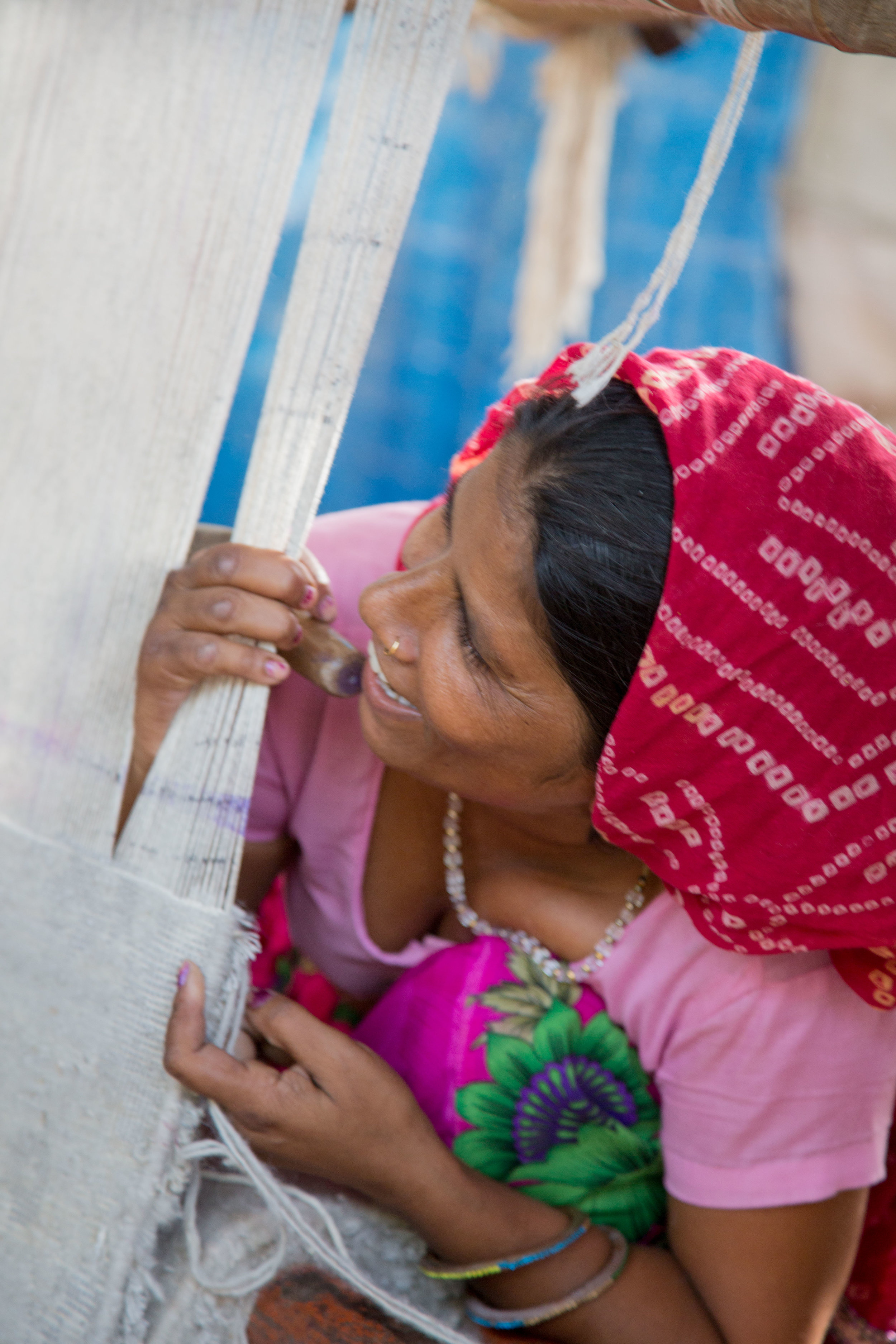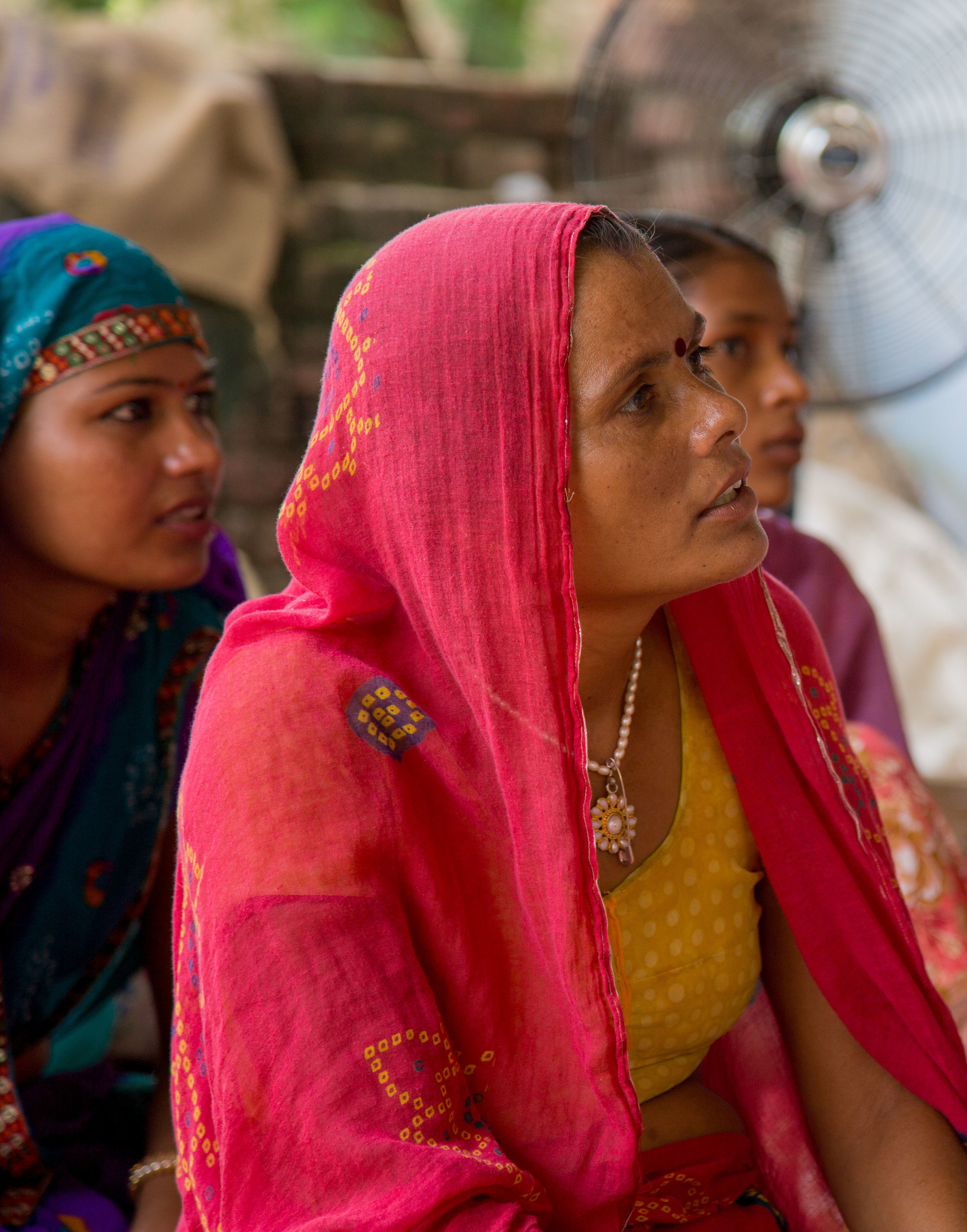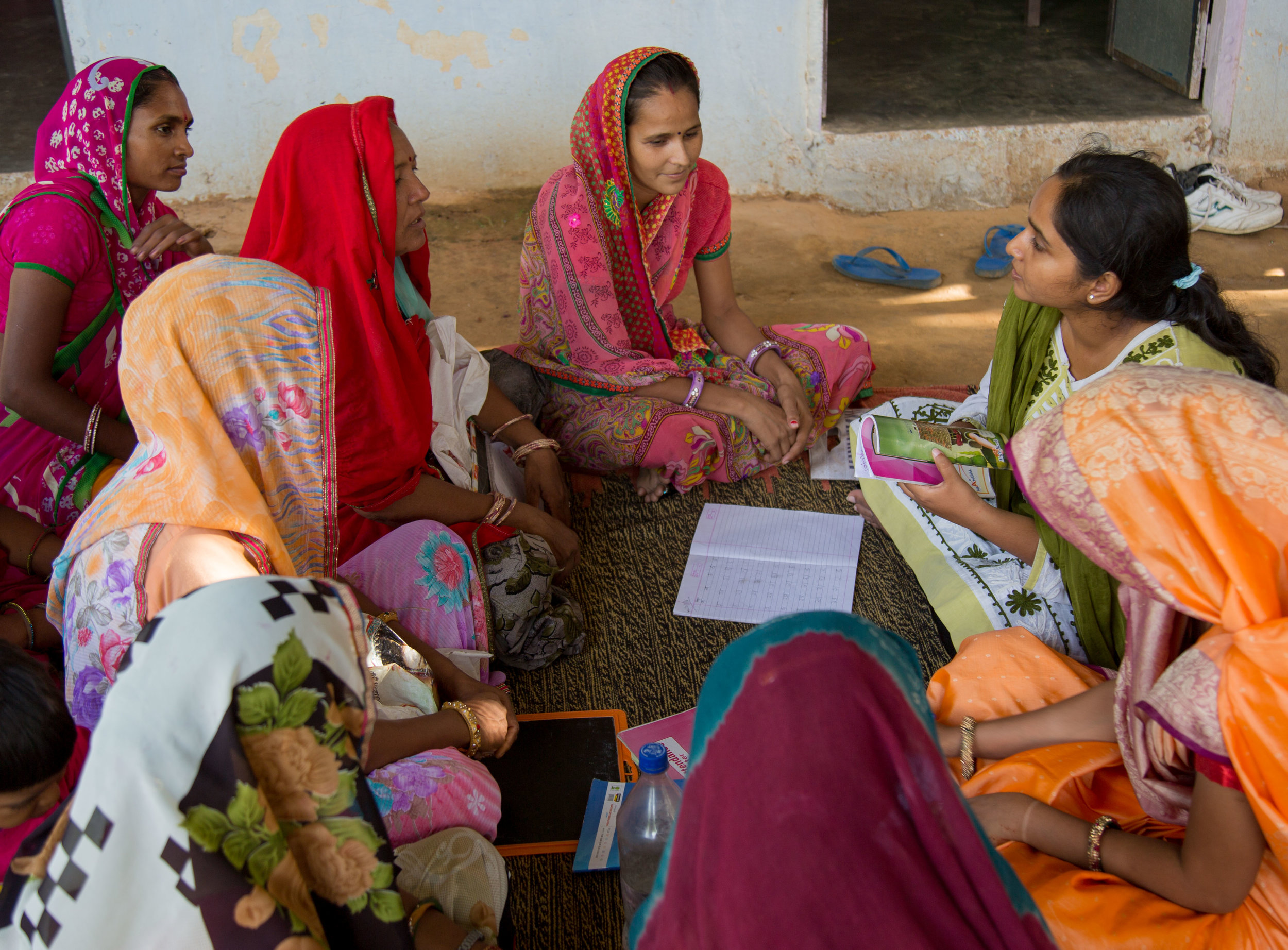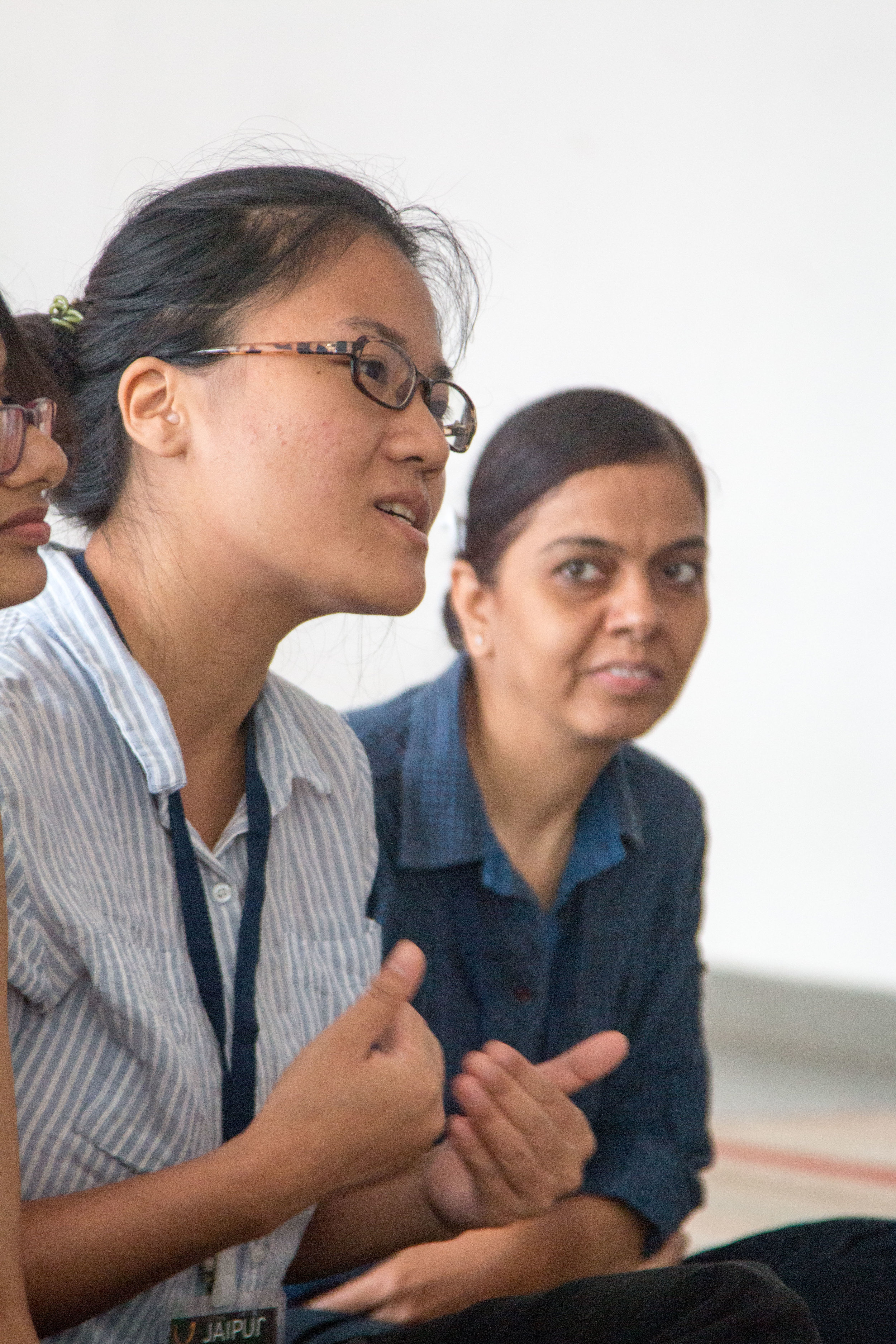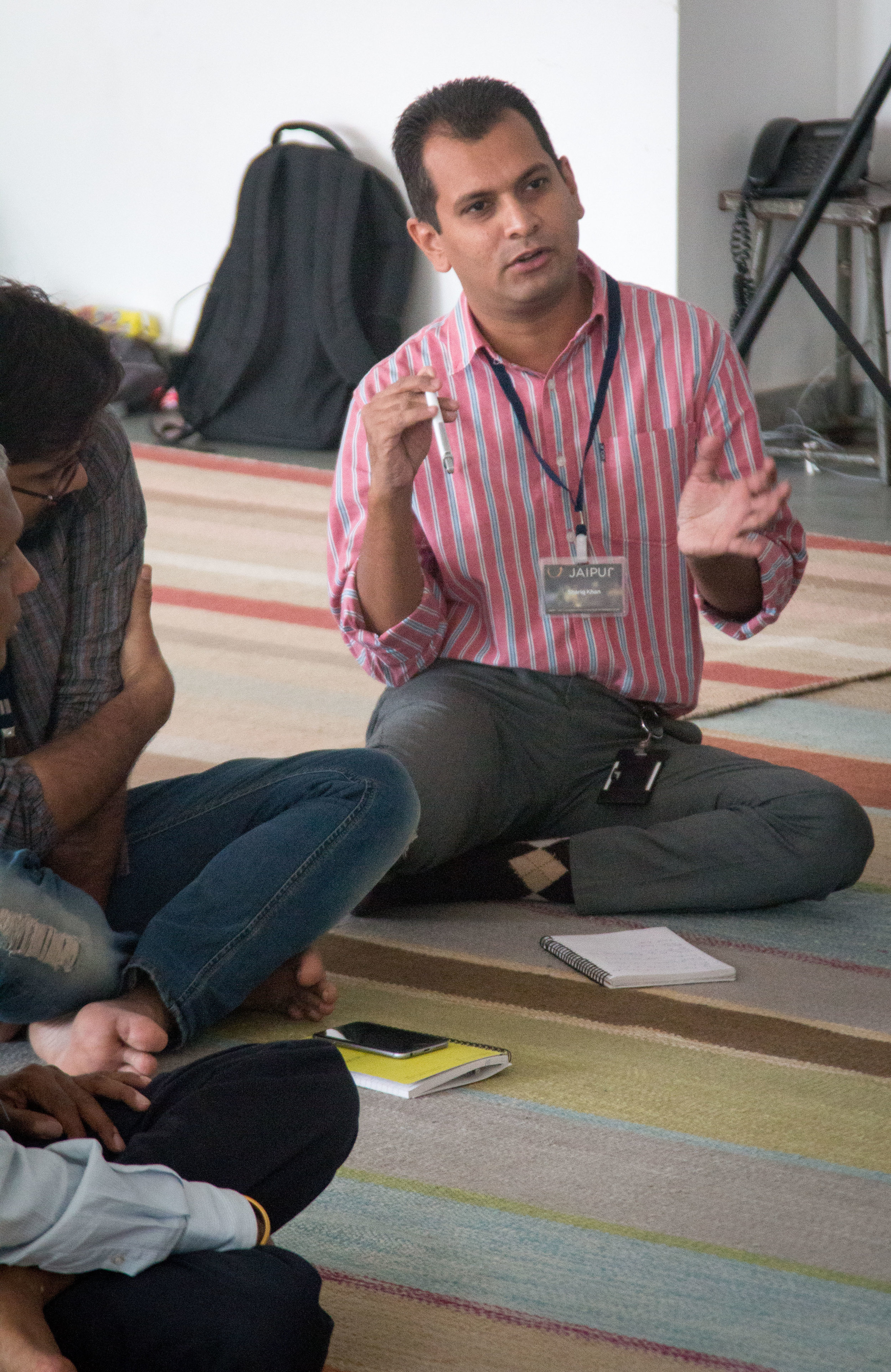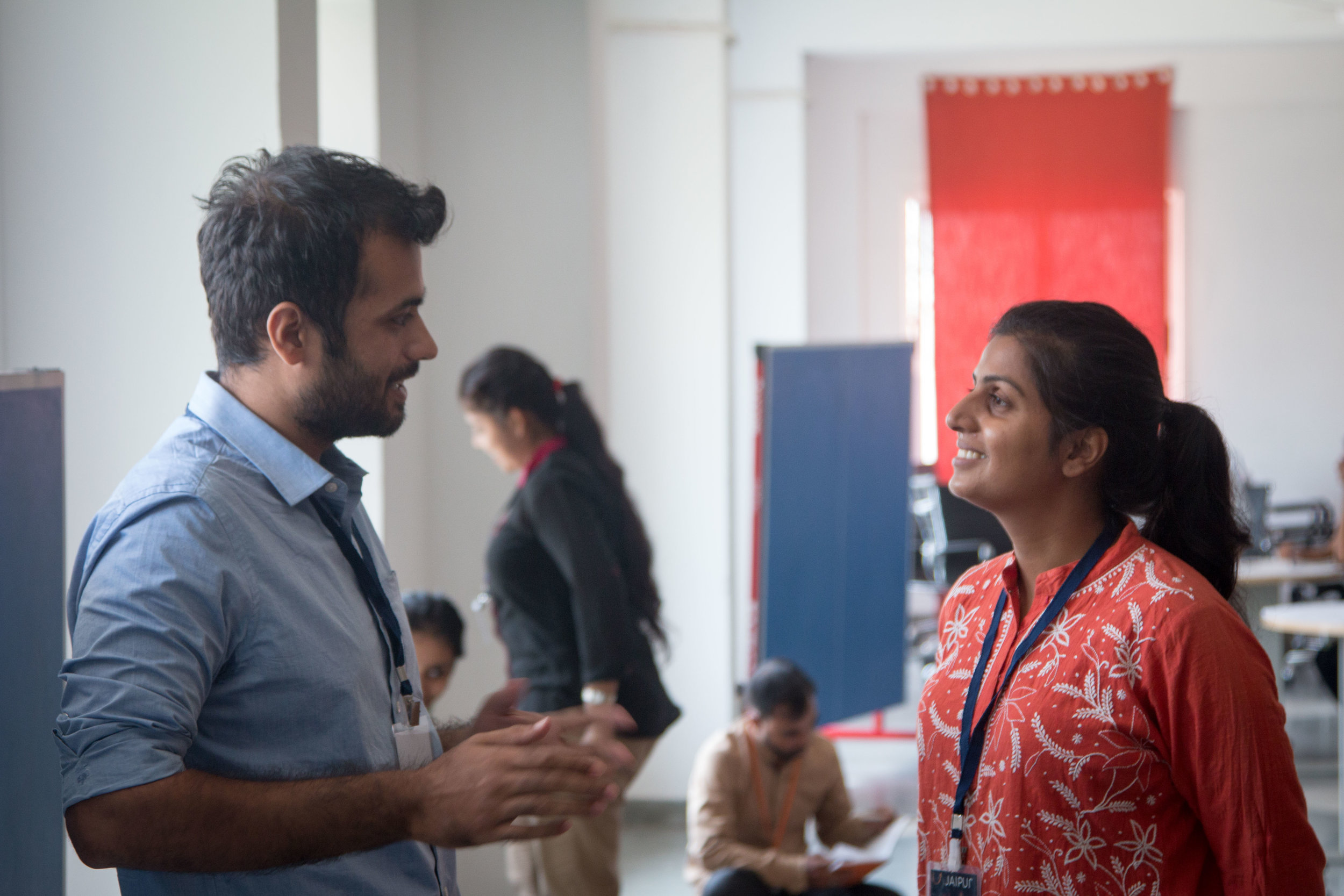



N.K. Chaudhary has been called "the Gandhi of the rug industry". Earlier this year in Atlanta he met Nipun Mehta, whose life and work is a testament to the spirit of Gandhi's message. Not surprisingly, they had an instant connection. Nipun was on his way from Atlanta to Costa Rica for our Global Wellbeing Lab, and perhaps for this reason, the conversation turned to Theory U.
N.K. learned about Theory U a few years ago and had been looking for ways to apply it in his company Jaipur Rugs. Nipun offered to introduce N.K. to Otto. Less than a month later, the two met at MIT along with N.K.'s daughter-in-law Mahika, who happens to live in Boston.
I was not able to attend the meeting, but in subsequent emails, both Otto and Mahika expressed excitement about the possibility of working together. A number of ideas emerged. One was to send a team to India to document the Jaipur Rugs story, which Otto saw as potentially a living example of Theory U. Another was for Jaipur Rugs to form a company hub and take u.lab together in September in order to apply Theory U directly to Jaipur Rugs' current organizational challenges.
Mahika and I met in early June to discuss how some or all of this might work. We quickly agreed it would be great for someone to film an interview with N.K., drawing him out on his personal leadership journey. As we spoke about u.lab and how to bring it into the company, I kept thinking of the u.lab Scotland model and how important the pre-course kickoff workshop in Edinburgh had been for creating a shared sense of possibility amongst interested Scottish participants and hub hosts. I suggested we do something like that for Jaipur Rugs. And while I'm always sort of looking for an excuse to go to India, I wasn't necessarily thinking I would run such a workshop...
Or maybe I was.
Whatever the real truth may be...last week, I boarded a flight from Shanghai to Delhi, and Delhi to Jaipur, to spend four days learning more about Jaipur Rugs' work and to host a workshop for 20 people in the company who were interested in learning more about Theory U and the u.lab MOOC in September.
When I landed in Jaipur, Swati was waiting for me. Program Manager for the Jaipur Rugs Foundation, Swati had organized my visit and would join me throughout. She greeted me outside baggage claim with a quiet, knowing smile and inquisitive, laser-focused quality of attention that made me feel I was re-uniting with an old, dear friend.
Other than a brief email exchange and seeing her in one of Jaipur Rugs' impressively-produced videos, I didn't know much about Swati before I arrived. I had assumed most people in the organization would only have a general understanding Theory U. So you can imagine my surprise when, on our car ride from the airport to the hotel, Swati told me she had received Theory UfromN.K. two years earlier, had read and carefully studied all 500+ pages, and that it had a profound influence on her life and work.
We spent our first few hours talking in the lobby of the Royal Orchid hotel. Swati asked about my life and my story, and I asked more about hers. She had completed a Masters in Finance from ICFAI Business School in Hyderabad in 2013. A serious practitioner of meditation with an interest in human development and education, she had been drawn to the city of Jaipur ever since she was young. In her current role, she spends extensive time in the villages working on various women's empowerment and grassroots leadership programs. As she described what she does, it was clear this is far more than just a job for her - it's really her Work.
Swati had a few questions about Theory U. She wanted to know whether we could talk about them, and I said sure. "So tell me," she asked, "what is your understanding of the Higher Self?" I must have then straightened up in my chair.Her knowing smile returned. That's where you want to begin? I thought, impressed and slightly intimidated.
Already, my assumptions of what I'd come to do were shifting. I realized this Jaipur Rugs collaboration might be something richer and deeper than I had expected.
I suggested to Swati that we not finalize the workshop schedule until the end of Day 2, to allow for new ideas and needs to arise during our sensing journeys. I didn't realize at the time how prescient that comment would be. The original plan for my visit was as follows:
- Arrival day: tour of the city
- Day 1: tour of the company, overview of current challenges, conversation and interview with N.K.
- Day 2: visit two villages to meet weavers, local branch managers, and Bunkar Sakhis ('weaver's friends' - local leaders who play a key role in various weavers' empowerment programs at the village level)
- Day 3: Theory U / u.lab kickoff workshop for 20 leaders from Jaipur Rugs company and foundation
Day 1 - Office Visit
The first day started as planned. Swati gave me a tour of the company headquarters, which includes two buildings that house the central offices for various departments such as HR and sales; a packaging center and a showroom for finished rugs; numerous creative departments where product design and digital marketing take place; and much more.
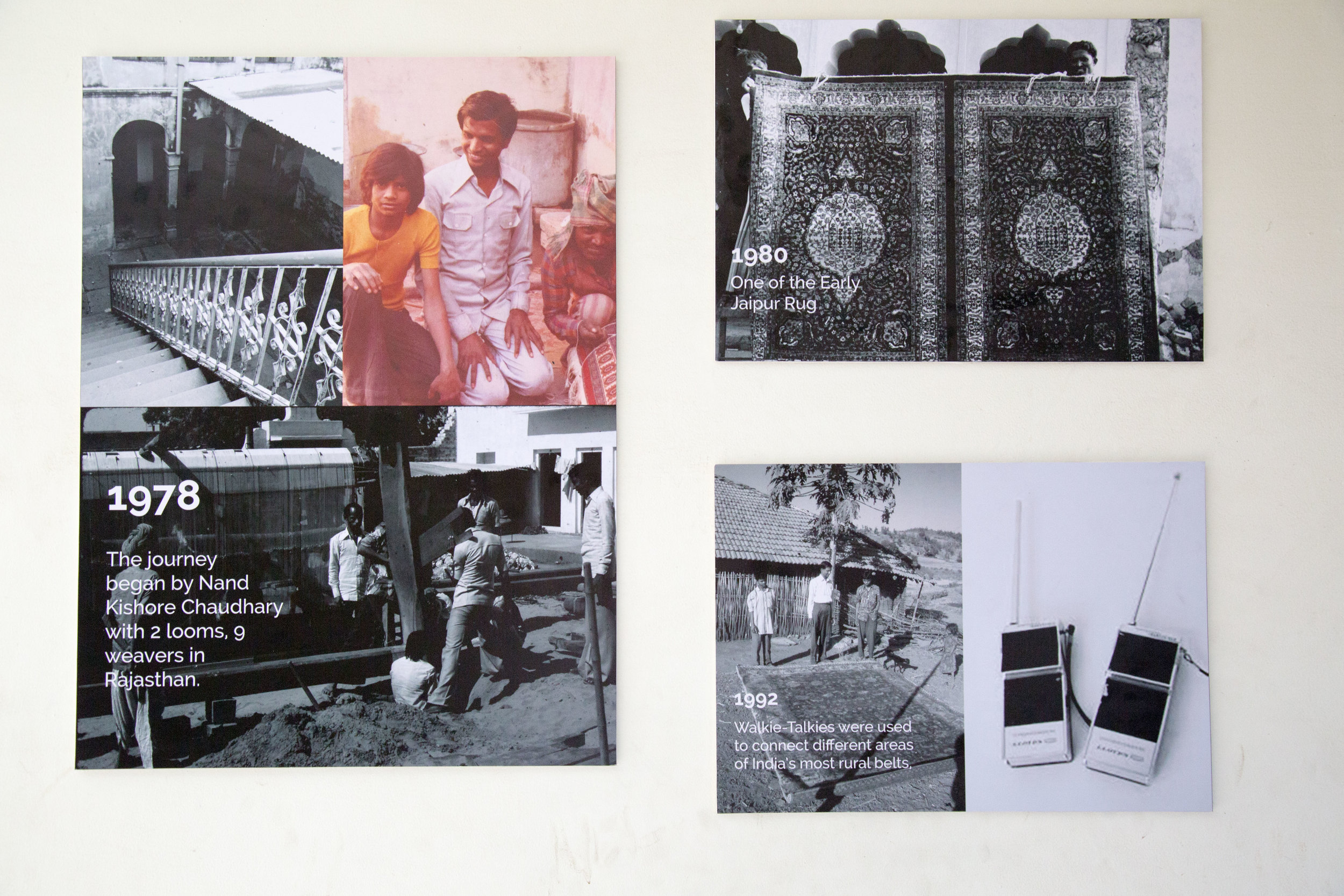
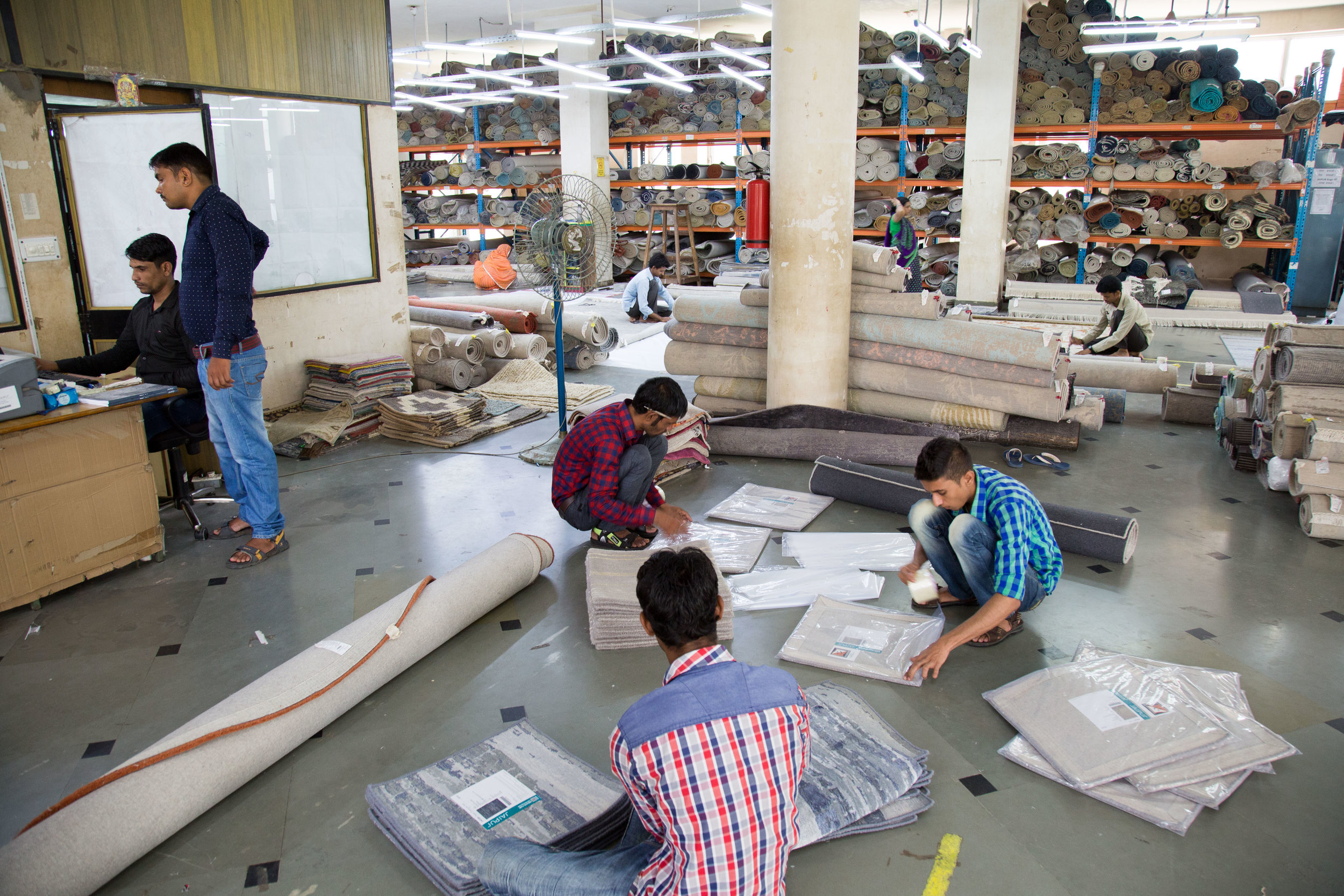
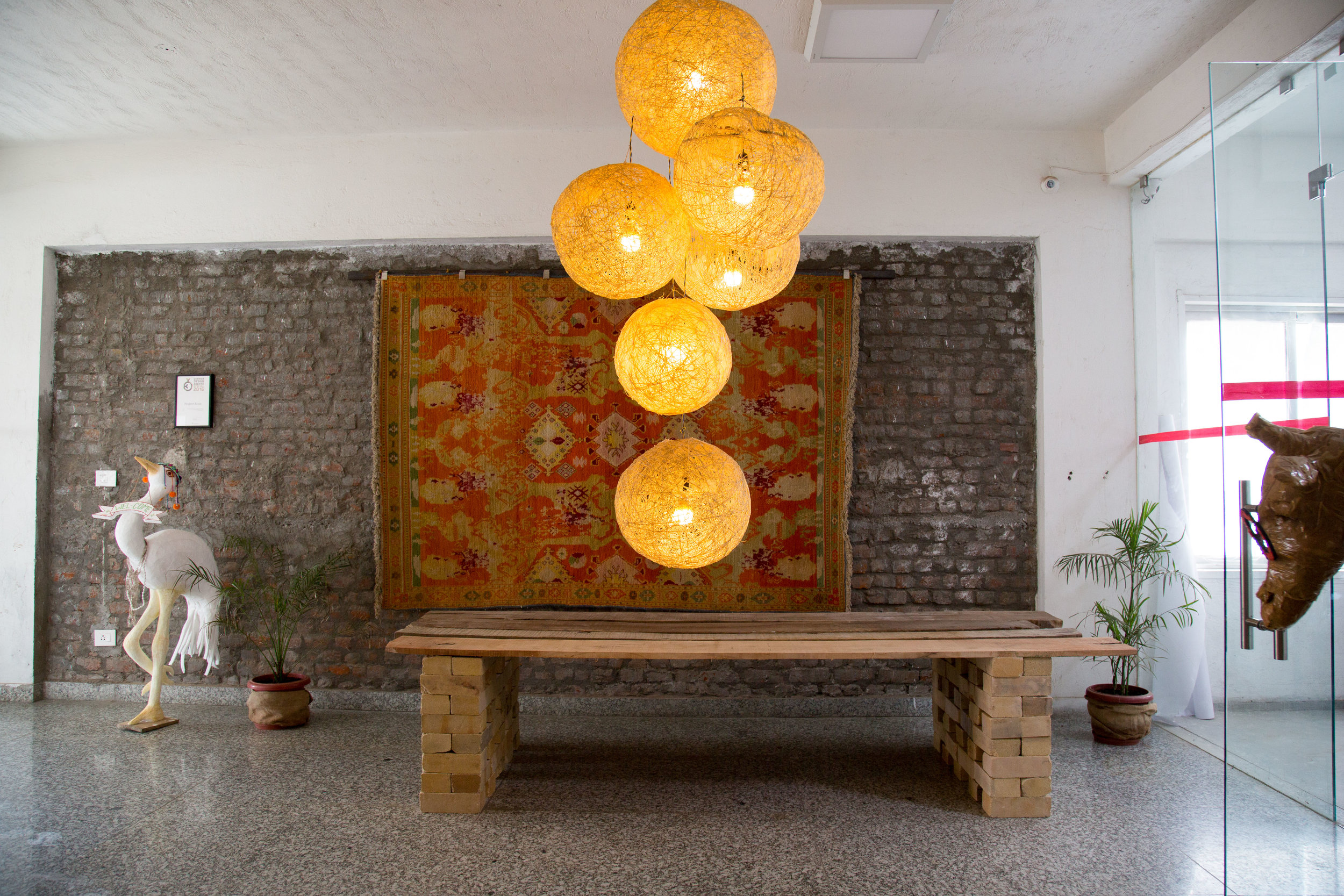
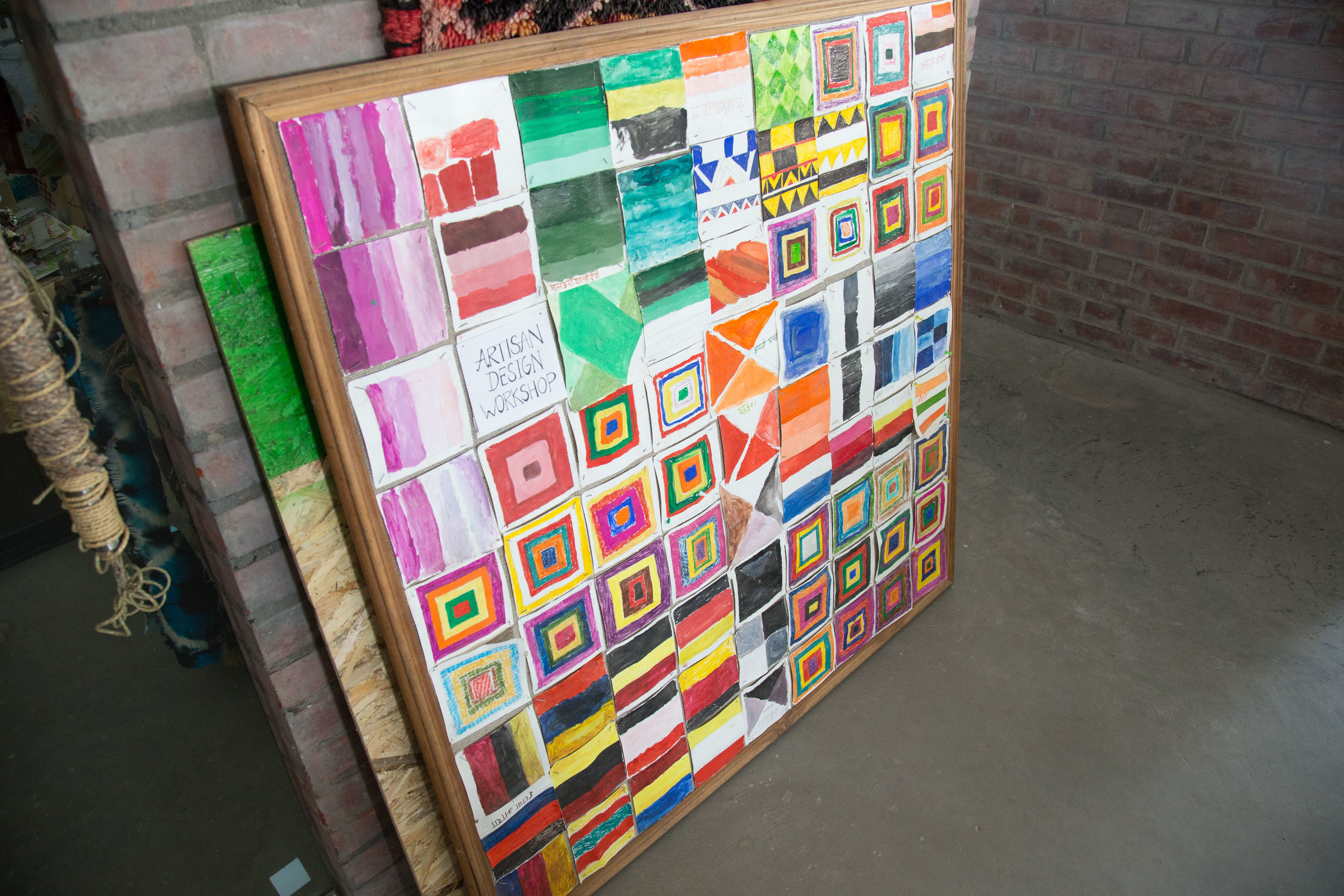
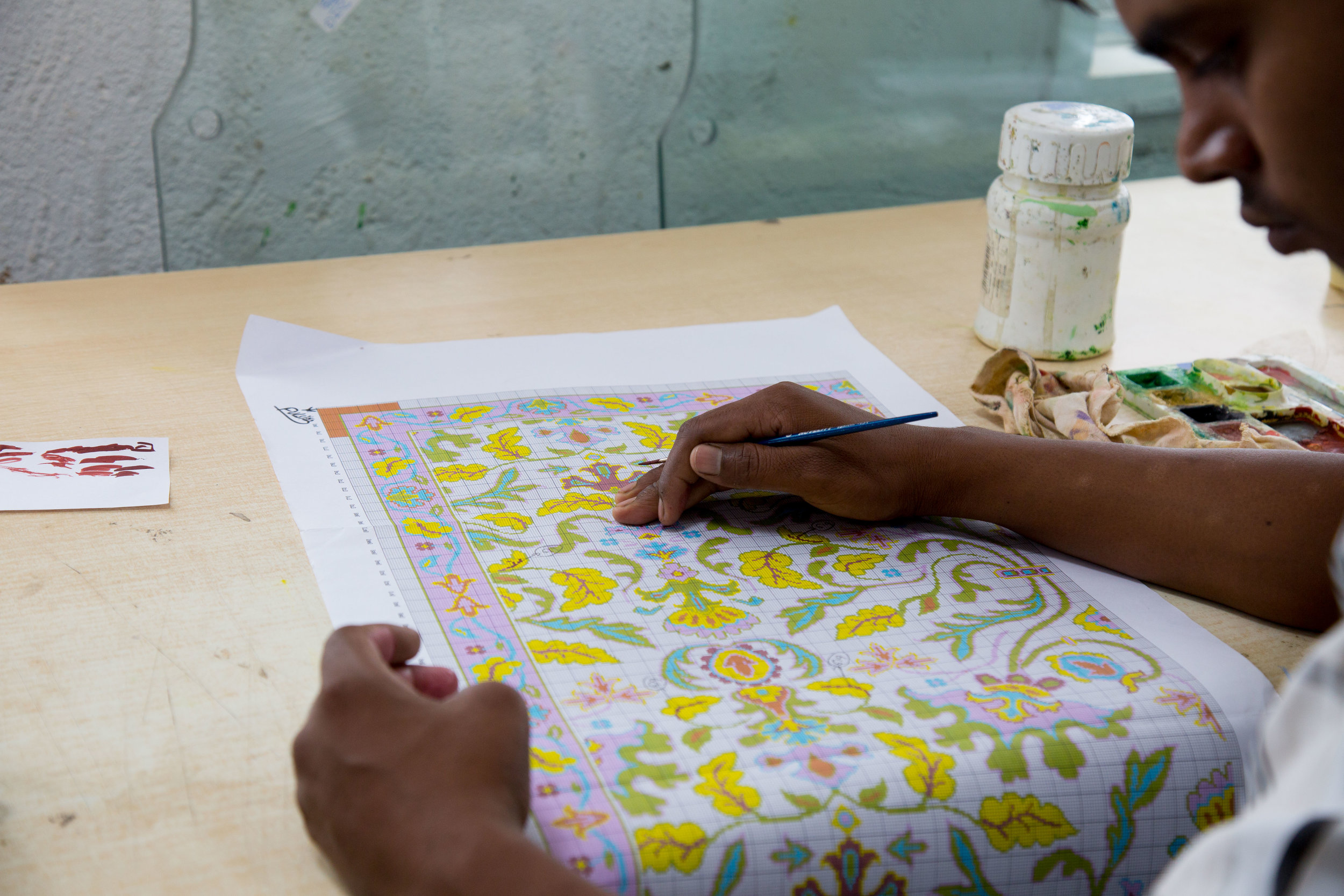
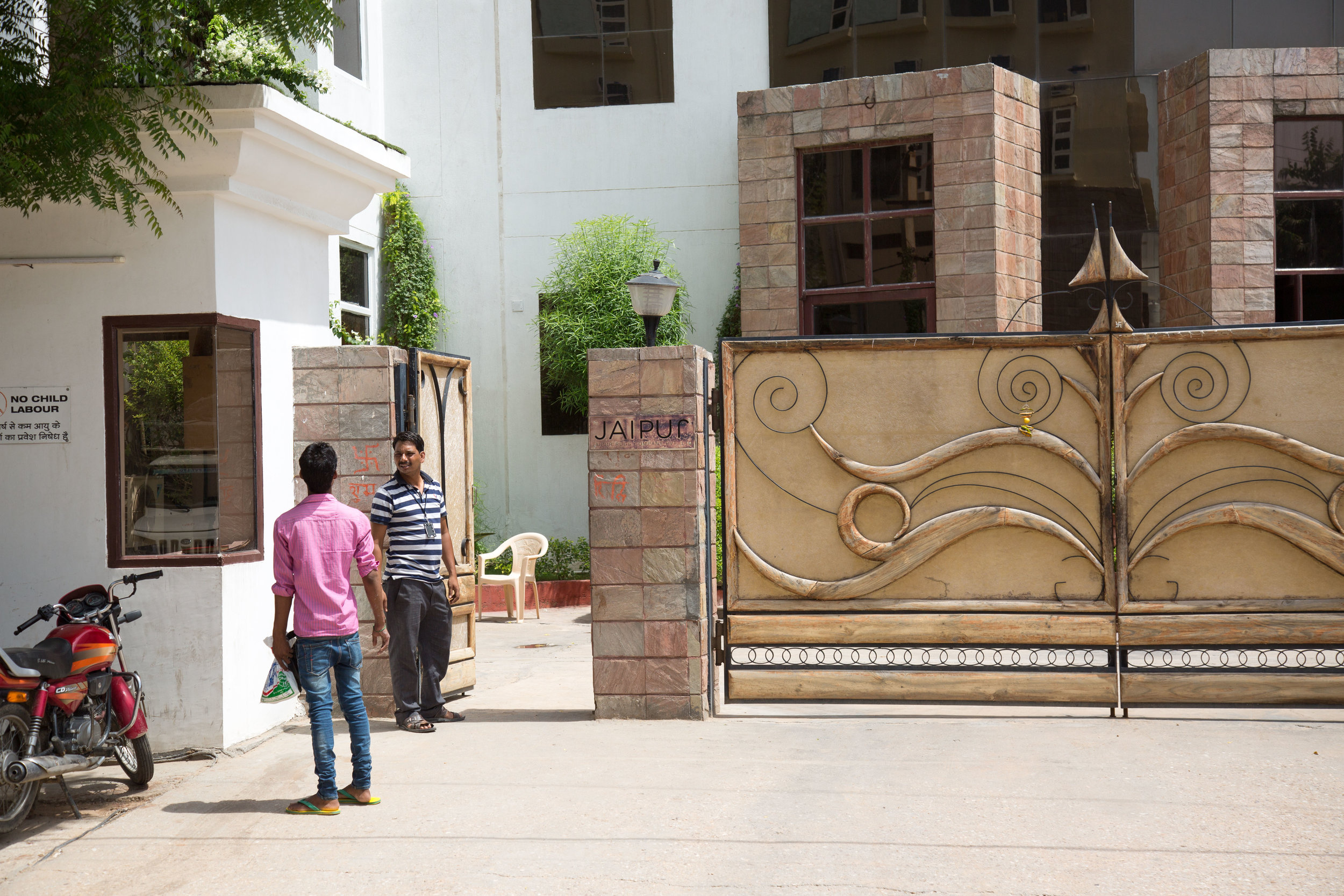
As we walked past the HR department, I noticed a curious sign above the door:
I asked Swati what that meant, and she suggested I include that in my questions for N.K.
After the tour, I met N.K for the first time. He is a deeply humble person. Grinning ear to ear, he expressed his profound gratitude for my visit, calling it a "gift from god" - which surely spoke more to his humility, love, and appreciation than anything I had to offer. He told me about his struggles, running a business for 38 years that always aspired to put people before profit, and how for 33 years people in the carpet industry had misunderstood him, questioned his understanding of business, and doubted whether his business model could survive.
After the financial crisis in 2008, and especially over the past five years, the criticism started to subside - and N.K. had attracted the interest of academics and others who took a renewed interest in what he was doing. It was around that time he also realized the need to bring more of a certain type of person into the company. "You saw the sign above the HR room?" he asked. "I realized there is one thing only that matters: the purity of a person's intention. That is who I have began to look for. Not only in Jaipur Rugs - but also in our supply chain partners."
It was a fascinating conversation - one that we returned to later in the afternoon in his office. That conversation was filmed and will be available during the September 2016 u.lab 1x course - so be sure to keep an eye out for it.
[UPDATE: October 13th, 2016] The interview is available here:
https://vimeo.com/187206852
The morning concluded with Swati giving a short but poignant presentation on current organizational challenges, and how she and N.K. believe Theory U could be of help. Some of the current challenges include:
- The need to reconnect and listen in a new way to the company's two "front-lines" - the weavers and the customers.
- How to create a culture of trust, where people go beyond being nice and feel safe to speak hard truths to each other.
- As it grows, how to maintain the culture of curiosity and humility that the company was founded on. Jaipur Rugs hires standout graduates from top MBA programs in India, who come from cities and often don't feel they have anything to learn from those in the villages.
- Lack of inspiration: some people in sales see their job as just selling a product. They talk only about the rug, not the company's deeper values, the stories of the human beings behind the products, and the families whose lives are changed through the business. They aren't inspired because they don't know why they are working in Jaipur Rugs.
After lunch on Day 1, plans suddenly took a new turn.
Swati had told me the day before that she wanted to get beyond an intellectual knowledge of Theory U and understand how it's applied in practice. Back in the conference room, she and Kavita Chaudhary, N.K.'s daughter and Design team lead, were outlining the plan for visiting the villages the following day. As Swati describe the schedule, it occurred to me: why not use this moment, which was essentially learning journey preparation, to lead them through the Theory U approach to learning journeys? Why wait until my scheduled workshop to be helpful? I offered this suggestion, and they were eager to do it.
I started by saying the key difference between a field visit and a learning journey is how you prepare, how you pay attention during the journey, and the reflection you do afterwards. I asked Kavita and Swati to take a pen and paper and suggested we each write down what intentions and assumptions we each had about tomorrow's journey. After five minutes or so, we took turns sharing.
At one point, Swati shared a deep assumption about the motivation weavers have for participating in the foundation's programs. I pointed out that this is exactly why we do this exercise. The real purpose of a learning journey is not only to learn something new about the world out there, but also to explore the ways in which we listen and pay attention during the visit. Are we only confirming conscious or unconscious beliefs we already had? Are we listening for something that might disprove what we hold true? Are we empathizing with those we meet? Are we pay attention to emerging future possibilities - that which is possible, but not quite there yet?
After just a few minutes of journaling, sharing, and framing, something noticeably shifted in the room. It felt as though we were no longer just three individuals going out on a trip to see Jaipur Rugs' work. There was a deeper sense of purpose. So much so, that then this happened:
I offhandedly mentioned that it would have been great to take workshop participants on this type of journey before the actual a workshop begins. Doing so gives people a shared experience, surfaces new information, and deepens the relationships between them.
Kavita jumped on the idea.
Before I could finish my explanation she said: "So why don't we take all 20 people with us tomorrow?" I started saying no, it's too late, I don't think...but I noticed she was serious and that I was responding mostly out of an uh-oh-am-I-prepared-to-facilitate-this-for-20-people sort of fear. I decided I should just keep quiet. Within minutes, it was no longer a question of if we should do this, but how.
We briefed N.K. on the idea and he loved it.
By 5:30pm that afternoon, twelve of the workshop participants were sitting quietly in the conference room, waiting to know why they were there. I walked in alongside N.K. and felt twelve sets of eyes upon me. I hadn't met any of these people before and I imagined they must have been thinking, who does this guy think he is coming in from abroad, asking me to drop everything and go out to the villages tomorrow?
But they were good sports. In fact, most of them seemed enthusiastic about the opportunity. After N.K. and Swati introduced me, I asked about everyone's previous experience going to visit weavers. Some had spent quite a lot of time in the villages. Some had only been once. One had never been at all. I briefed the group on learning journeys, explained the levels of listening, and walked them through the same journaling exercise I'd done earlier with Kavita and Swati.
As we shared intentions and assumptions, a pattern started to emerge. One of the group members named it directly. He said, with a surprised smile, "You know, when I think about it, not only do I assume the weavers will give the same answers they've given before. I'm assuming they will even anticipate my questions!" Although we only took about 20 minutes to prepare, it was enough to set the tone and generate some collective excitement for the next day's journey.
Day 2 - Learning Journey
The following morning, two cars were waiting at the Jaipur Rugs office. We decided to go together to the same village and then split into smaller groups upon arrival. Each group would spend 45 minutes visiting a different weaver, then we would come back together and share what we had seen, heard, and what had challenged our assumptions.
There were many powerful moments during the journey. My group visited a remarkable woman (pictured below, right) in her home, where she shared a story that left us all in awe.
She had visited the doctor a few years earlier. A mammogram showed cysts near her lower intestines. This eventually led to a cancer diagnosis. The doctor prescribed surgery. She cursed out the doctor, saying no way. Eventually she gave in. But after surgery, recovery was slow and the hospital staff was unhelpful. She needed a blood transfusion but nobody from the hospital would go to the blood bank - so she packed up her catheter bag, stuffed it in her sari, and walked there on her own.
Immediately after she was released from the hospital, she demanded her supervisor (Harfoolji, who we'll meet below) return her loom. He wanted her to rest so kept making excuses - your orders will come but they're stuck at headquarters...Every day as he passed her house on his way into work, she stopped and asked for her loom and orders. Harfoolji started taking a different route to work. Eventually, she got her loom back and created a carpet of her own design, inspired by the images she remembered from her mammogram and that of a sunflower, which told the story of her journey through illness and recovery.
After listening to this story, we reconvened with the whole group and crowded into a tiny room to listen to Harfoolji, the local branch manager, tell us about his life and journey. He recalled the way N.K. had his seen potential in a way he himself had not seen. N.K. had given him increasing responsibility, and insisted he learn to ride a motorbike so he could work in multiple villages. N.K. believed in him unconditionally. His area of responsibility grew from overseeing four looms to overseeing 128, and he had been recognized as a leader in the company. As Harfoolji finished his story, he paused, and it was silent in the room. Tears began to fill his eyes. "I just don't know..." he said, "how, in my life, I can ever repay such generosity."
And yet, as the conversation continued, it became clear he already had. To his left sat a young woman, Premji, the local Bunkar Sakhi. Mentoring her with the same kind of support he had received from N.K., she had grown into her own confidence. The seed N.K. had planted in one person was being passed down to subsequent people throughout the organization. It was a story I would hear time and again during my visit.
Before we left, I asked if anyone wanted to share what stood out or surprised them about the visit? Sitting next to Harfoolji, one of our group members cleared his throat. "I have worked with Harfoolji almost every day for six months. He shared things today that I never knew." Others in our group had similar experiences with the people they spoke with during the learning journey.
We left the village around 2pm and travelled an hour before stopping for lunch. The heat, late lunch, and intensity of the morning was starting to wear on the group. We had planned one more village visit for the afternoon. I asked whether people still wanted to go, and the majority did.
We visited Manpura, which had a different energy from the previous village. The weavers, all women, were dressed in bright colors and all seemed to speak with the same bold confidence. When work stopped at 5pm, many of them attended a Jaipur Rugs-supported school where they were learning basic English.
At 6pm, school ended and games began.
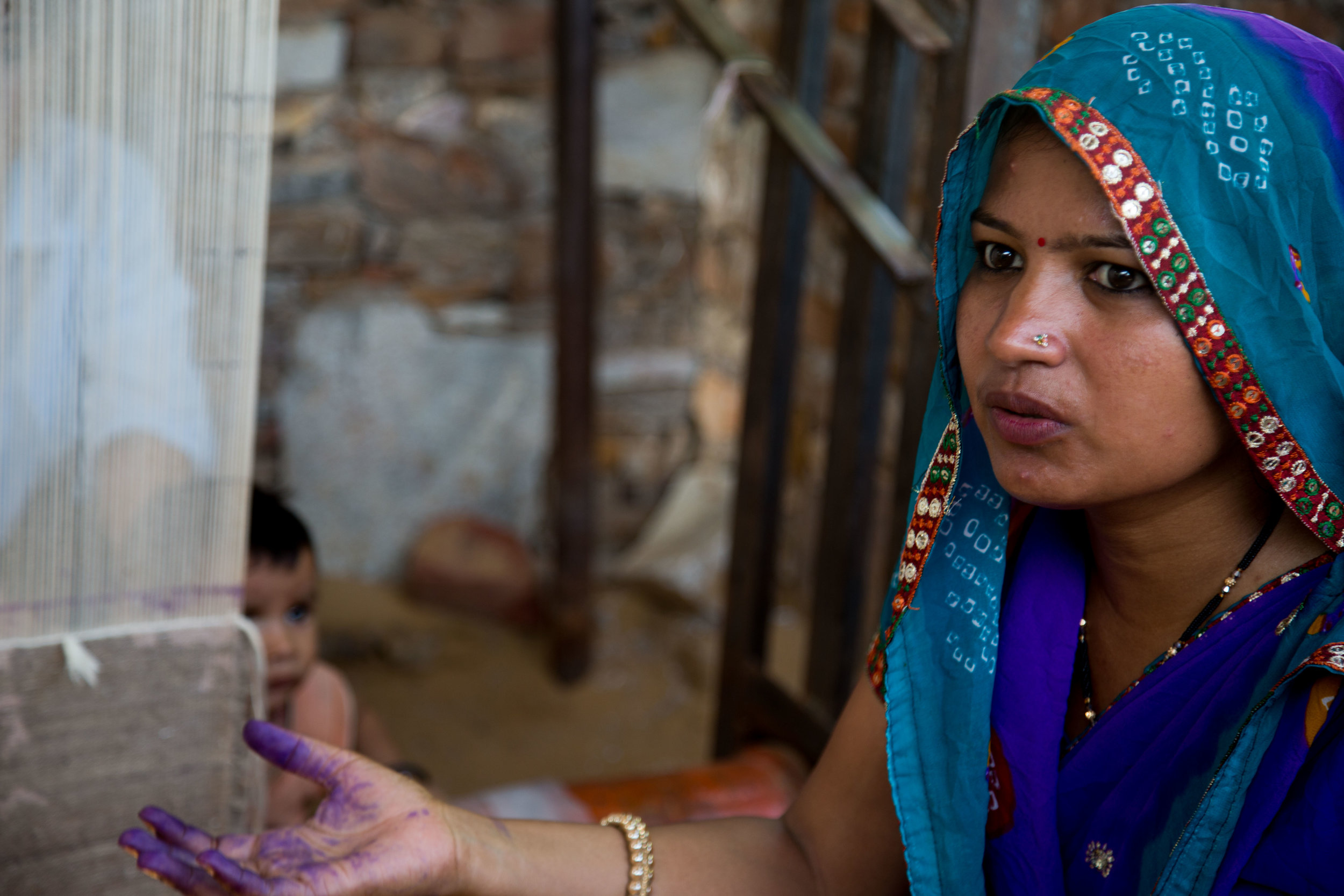

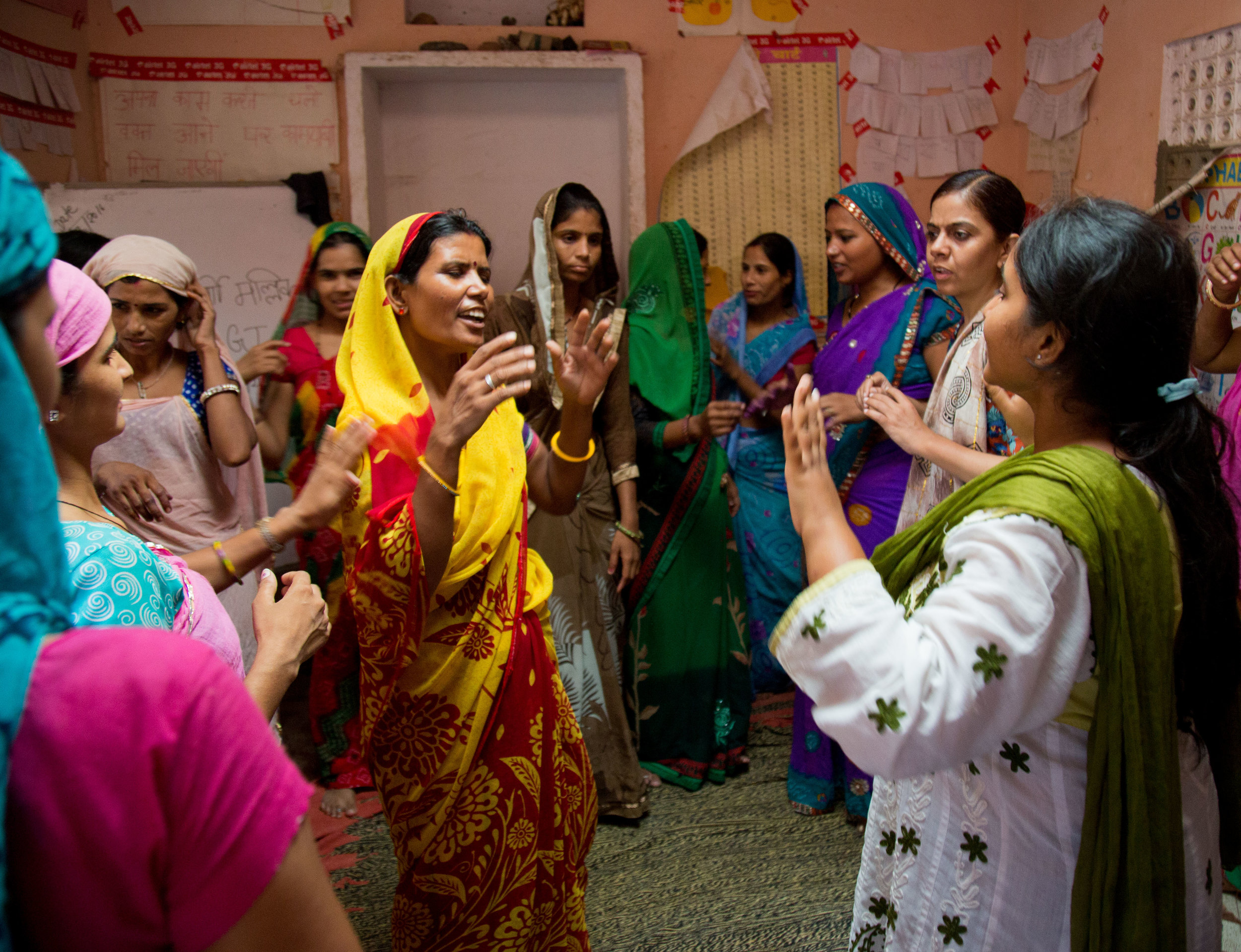

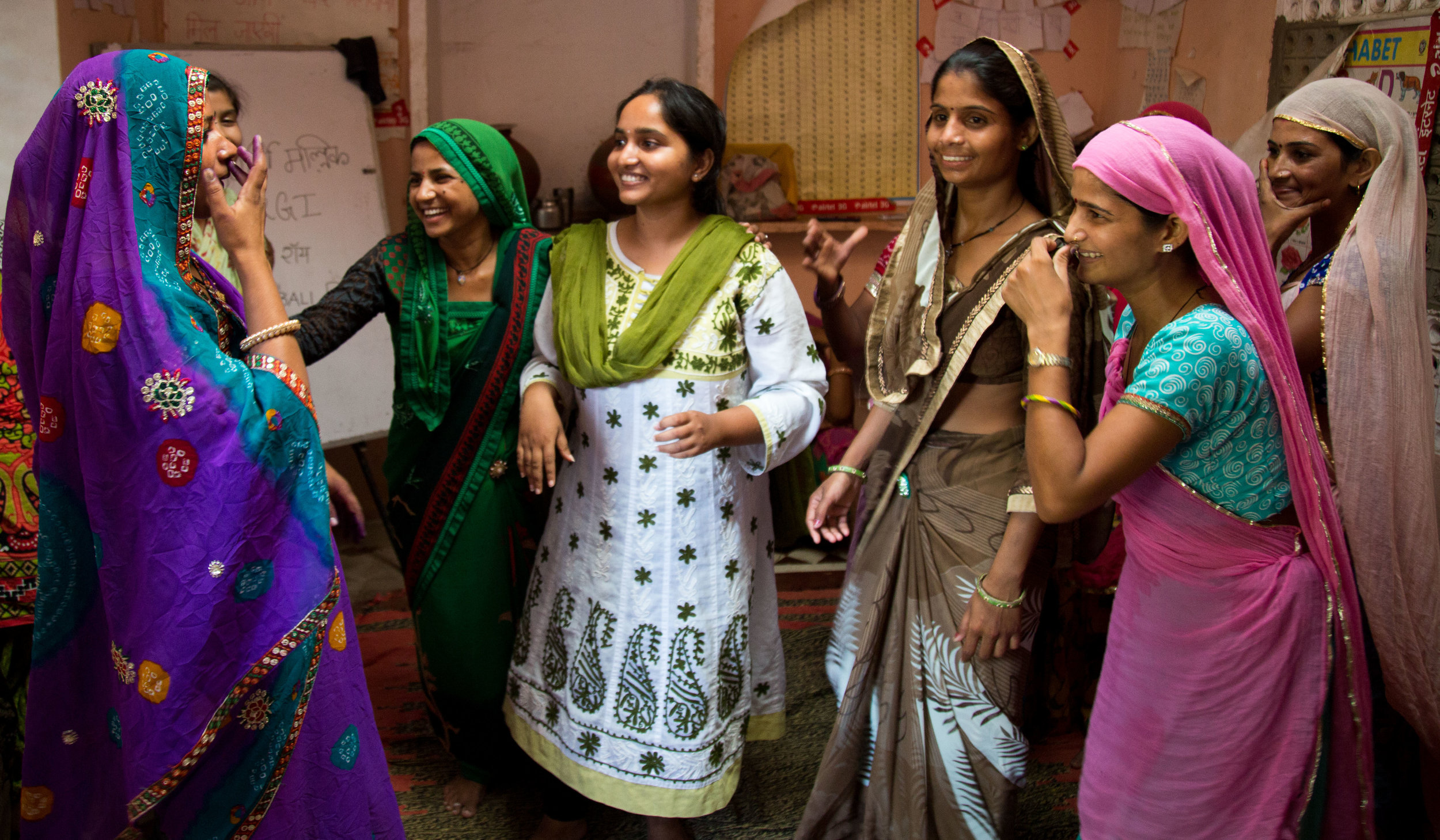
By the end of the day, it was late and we didn't have the energy for a proper debrief. We decided to build it into the workshop the following morning.
Day 3 - Workshop
There were three main intentions for the workshop: a basic introduction to the Theory U framework, a deeper dive into Theory U practices, and an introduction to how u.lab could be used to address current Jaipur Rugs challenges.
Twelve of the 16 people in attendance had been together for the learning journey. N.K. opened the morning with introductory remarks about Theory U. We then moved into a debrief of the previous day. There was a common feeling that the learning journey had surfaced new information from the weavers - which was significant since that is one of the company's current challenges. I asked what made that possible and people said it was because they practiced identifying intentions and assumptions, and when possible, suspending them. I inquired into moments when people experienced a shift in their quality of listening. Someone in the marketing department said: "I felt myself listening at deeper levels in the emotional moments - when the weavers and branch managers shared their journey and their struggles."
After the debrief, Swati presented the current company challenges. Many in the room had only joined the company recently so it was an opportunity for them to connect with some of these challenges for the first time.
The rest of the day was mostly experiential. We used different reflective and dialogue practices to help people connect more deeply with each other and themselves. In the morning we went on dialogue walks, continuing the practice of paying attention to our attention. Returning from the dialogue walk, a pair approached me and one of them said: "We've worked together in the same department for months, but never realized some of the things we have in common."
In the afternoon, we did a 3D mapping exercise. Working in pairs, one person creates a 3D model of a current personal or professional challenge, reflects on it from four different directions using a set of questions about what's wanting to end and what's emerging, then changes the sculpture to better reflect the emerging future. The level of artistry and attention people brought to their sculptures was stunning - some of the most beautiful work I've seen in this exercise. And the insights that emerged were quite significant for many people.
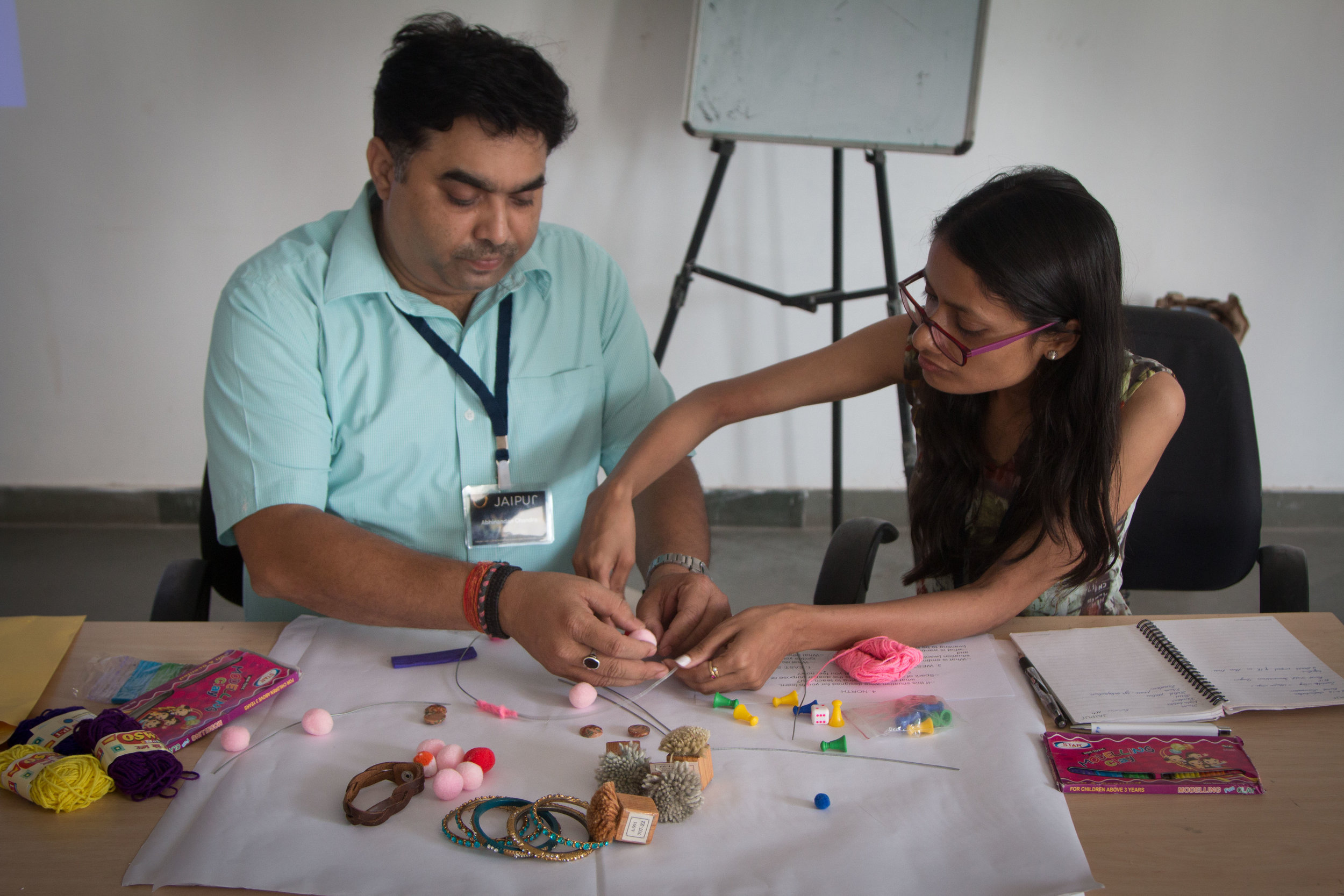
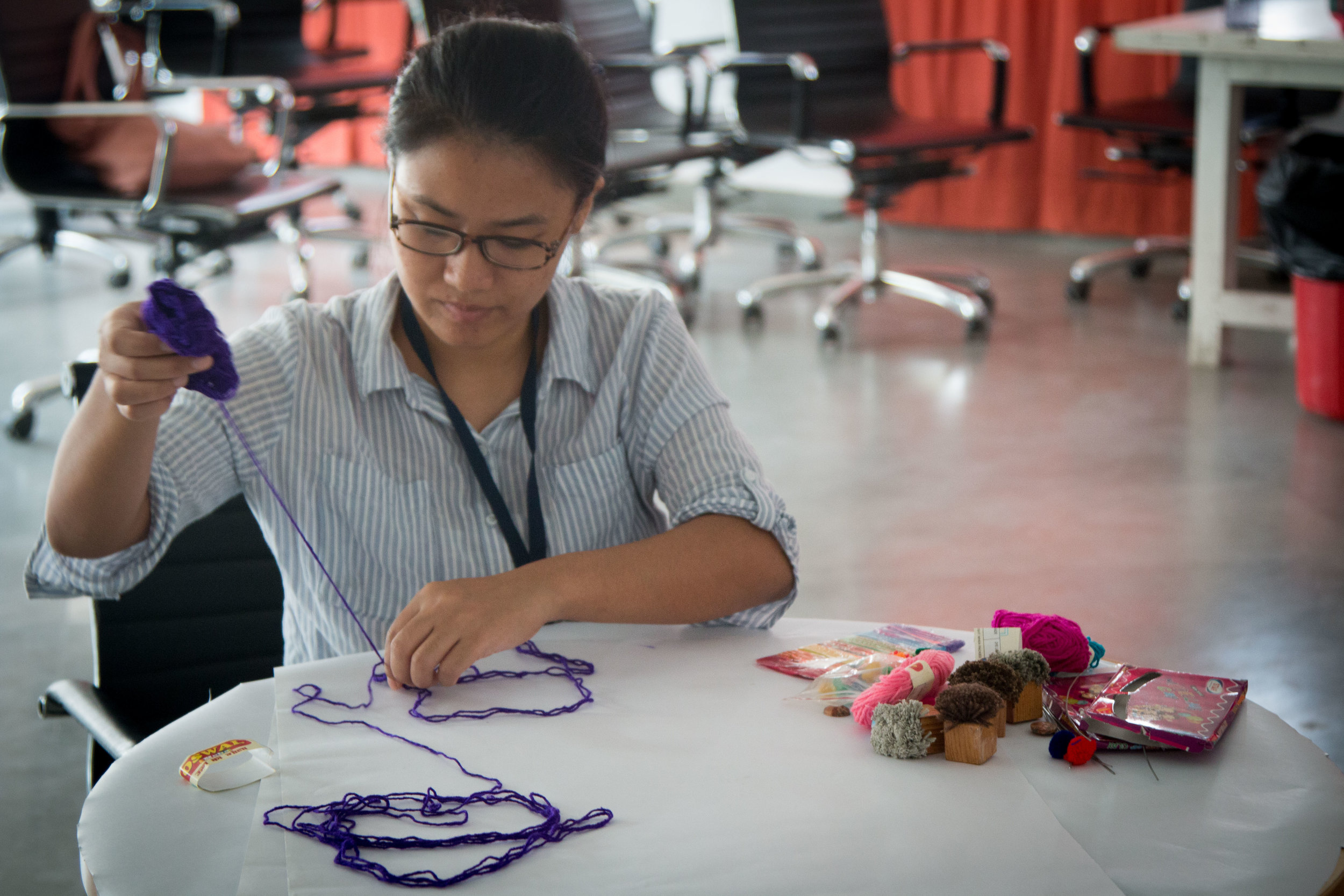

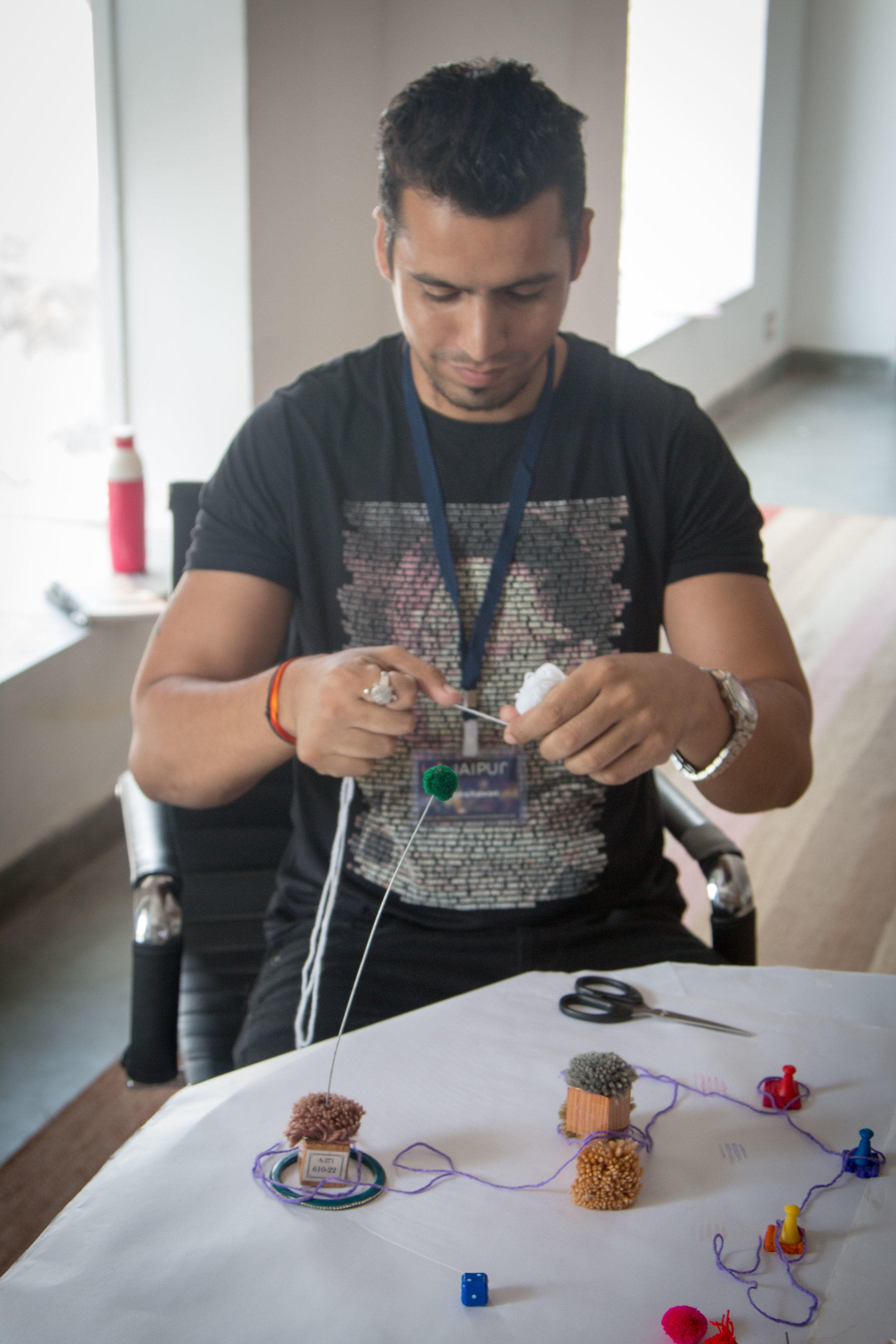
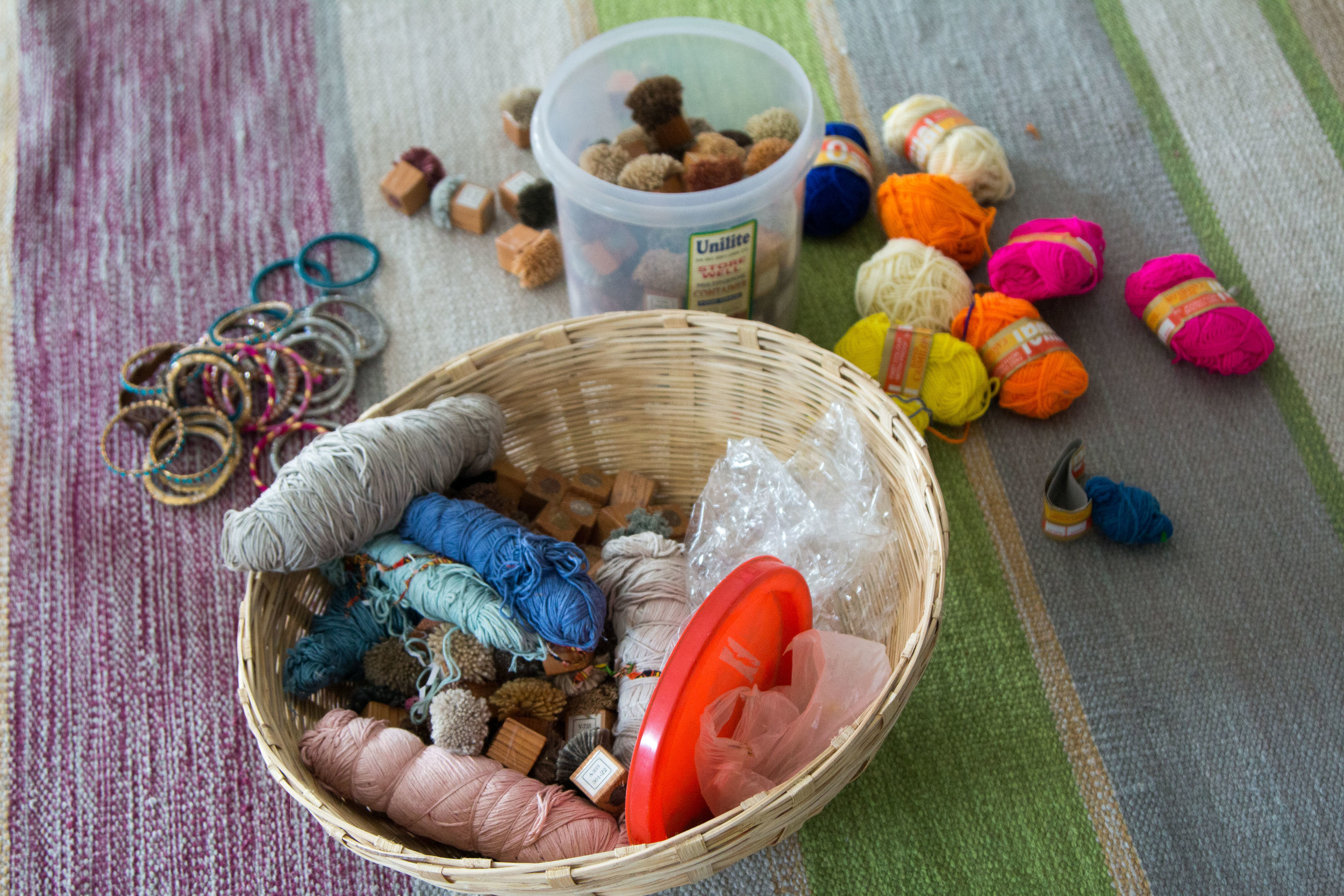
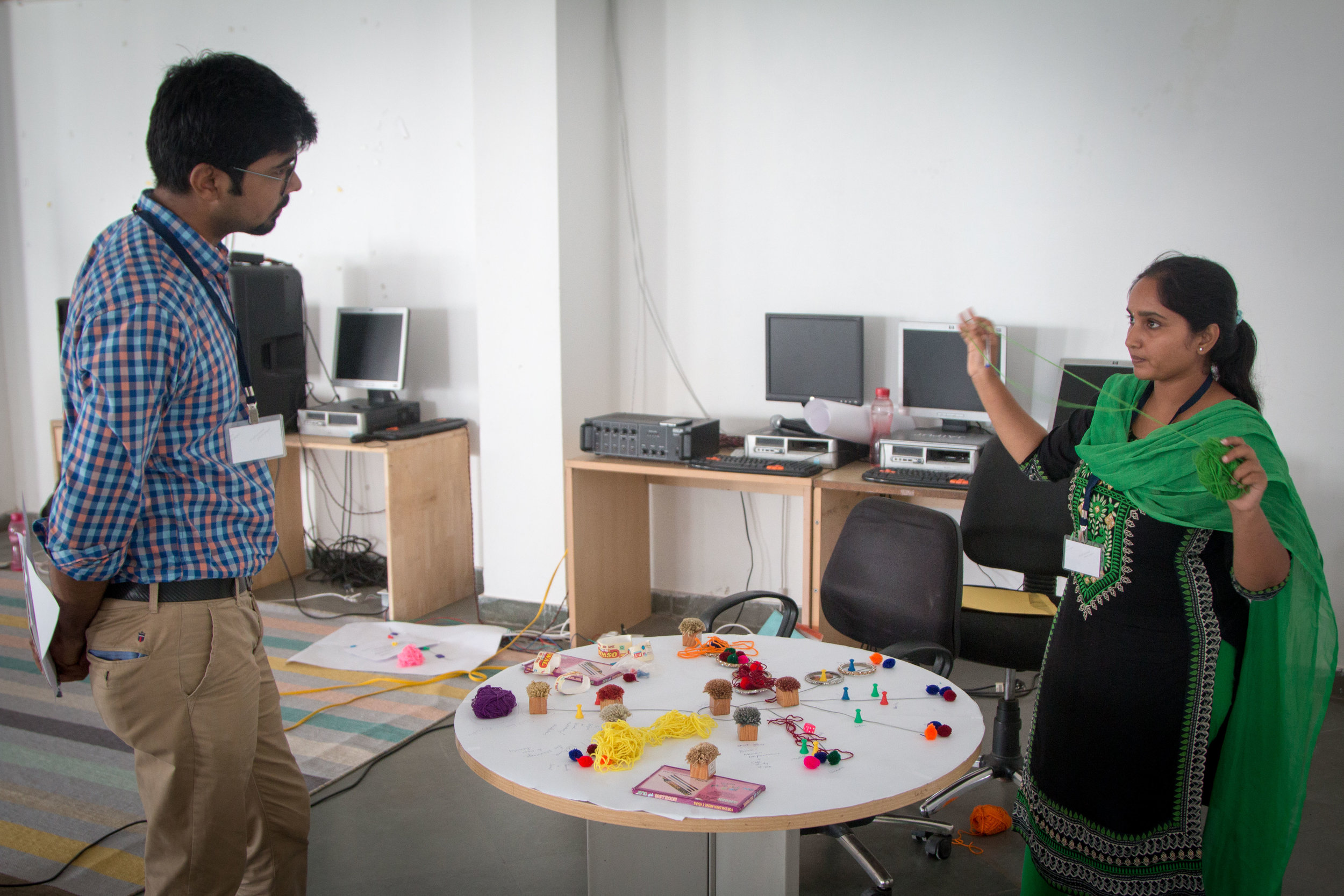
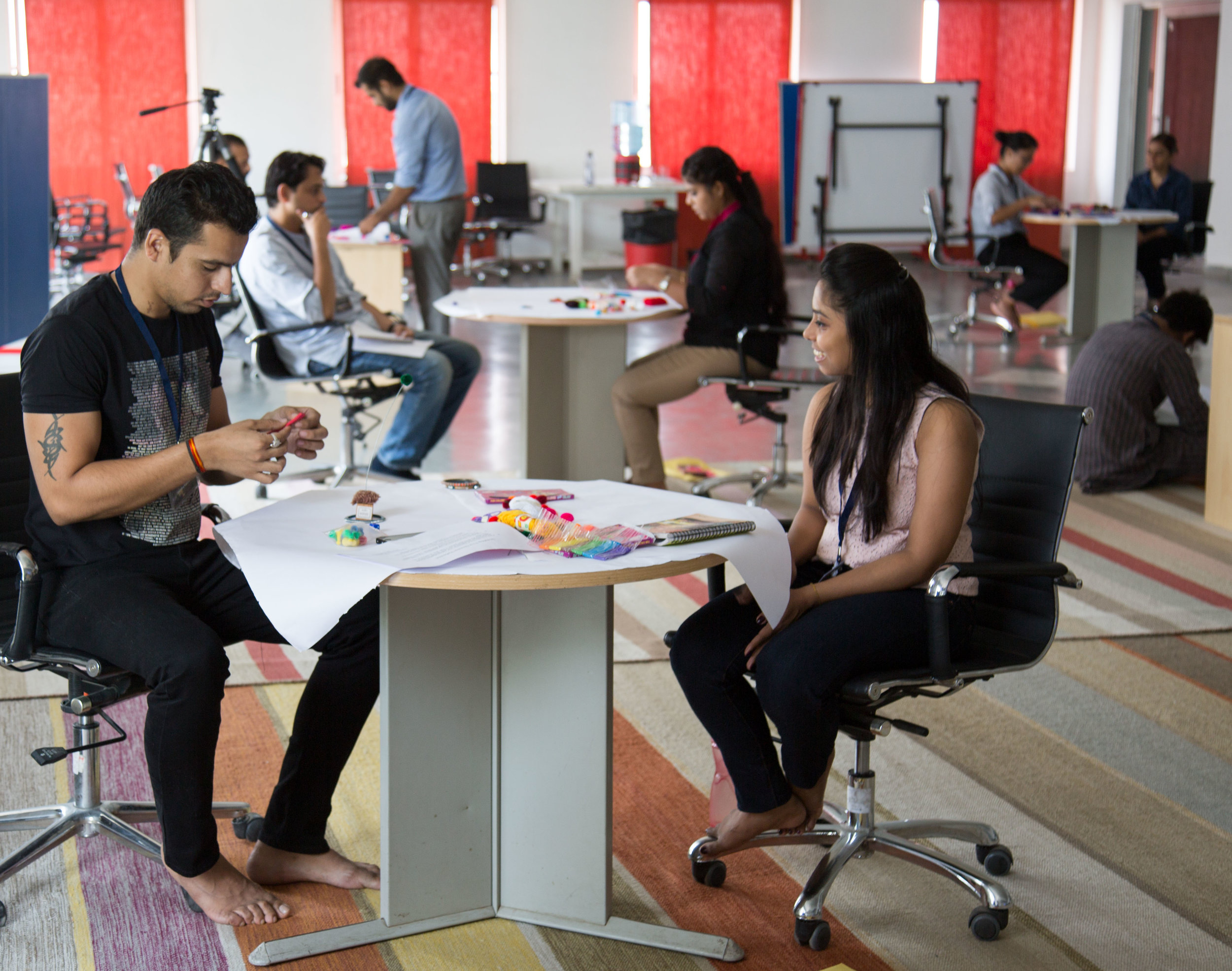
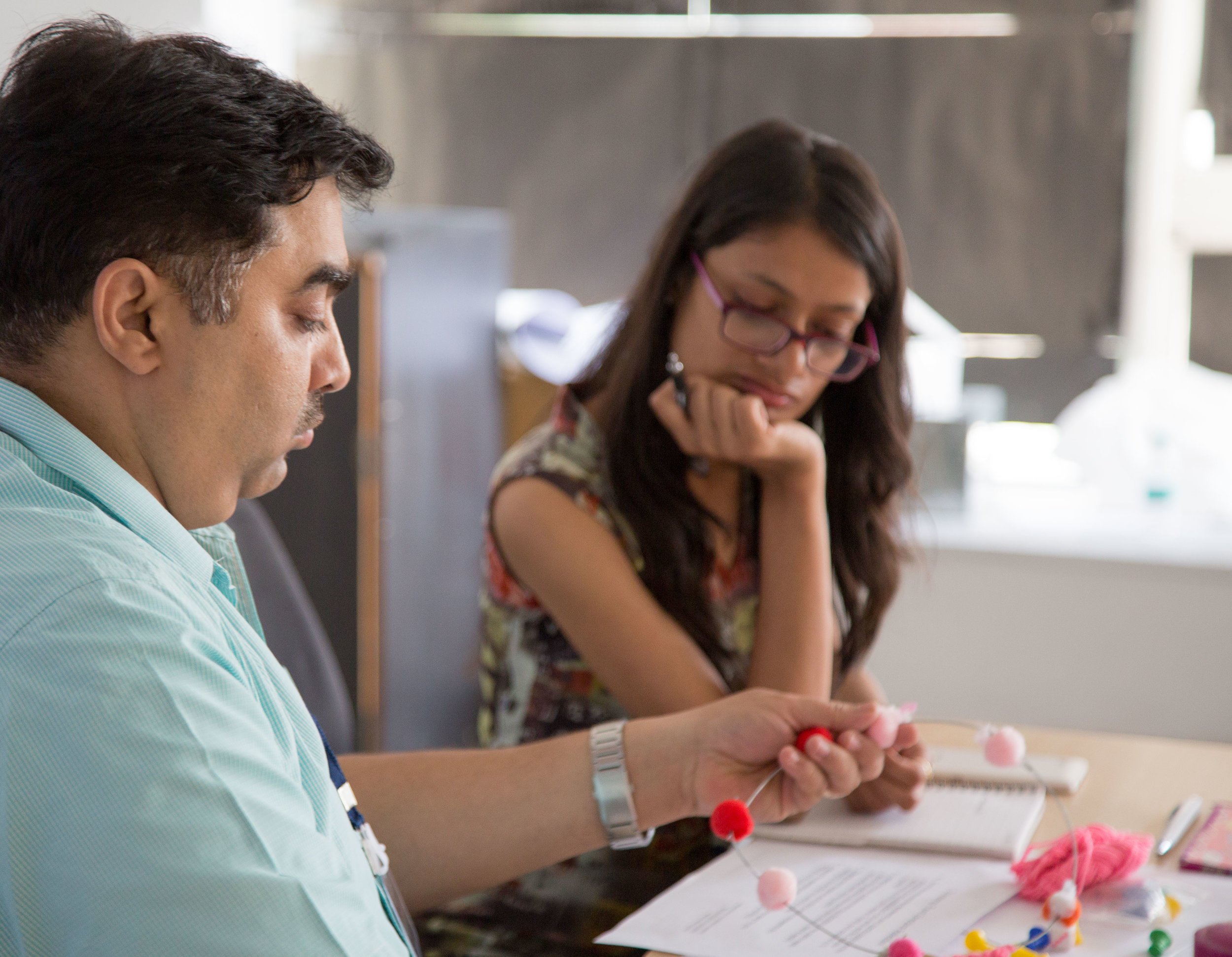
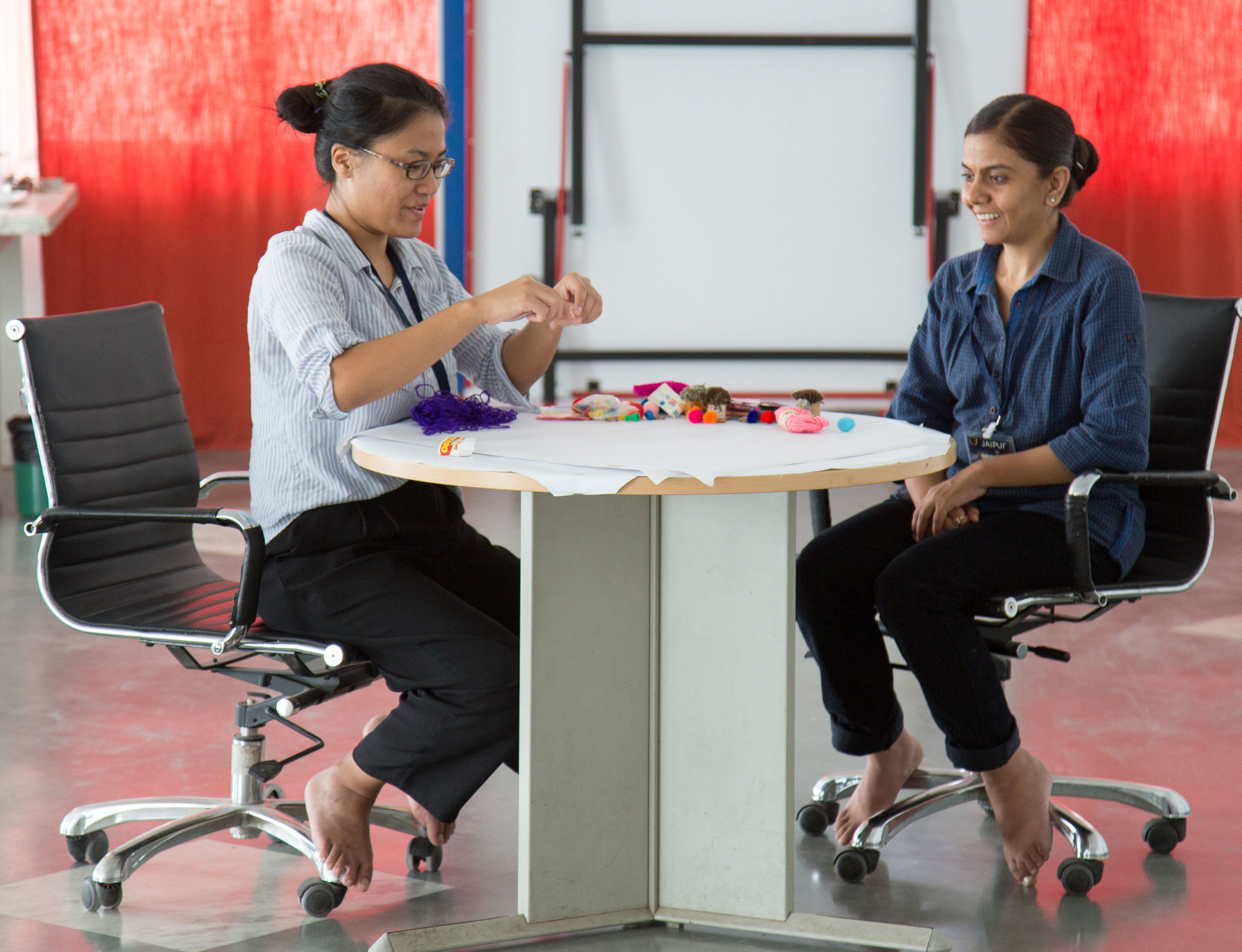
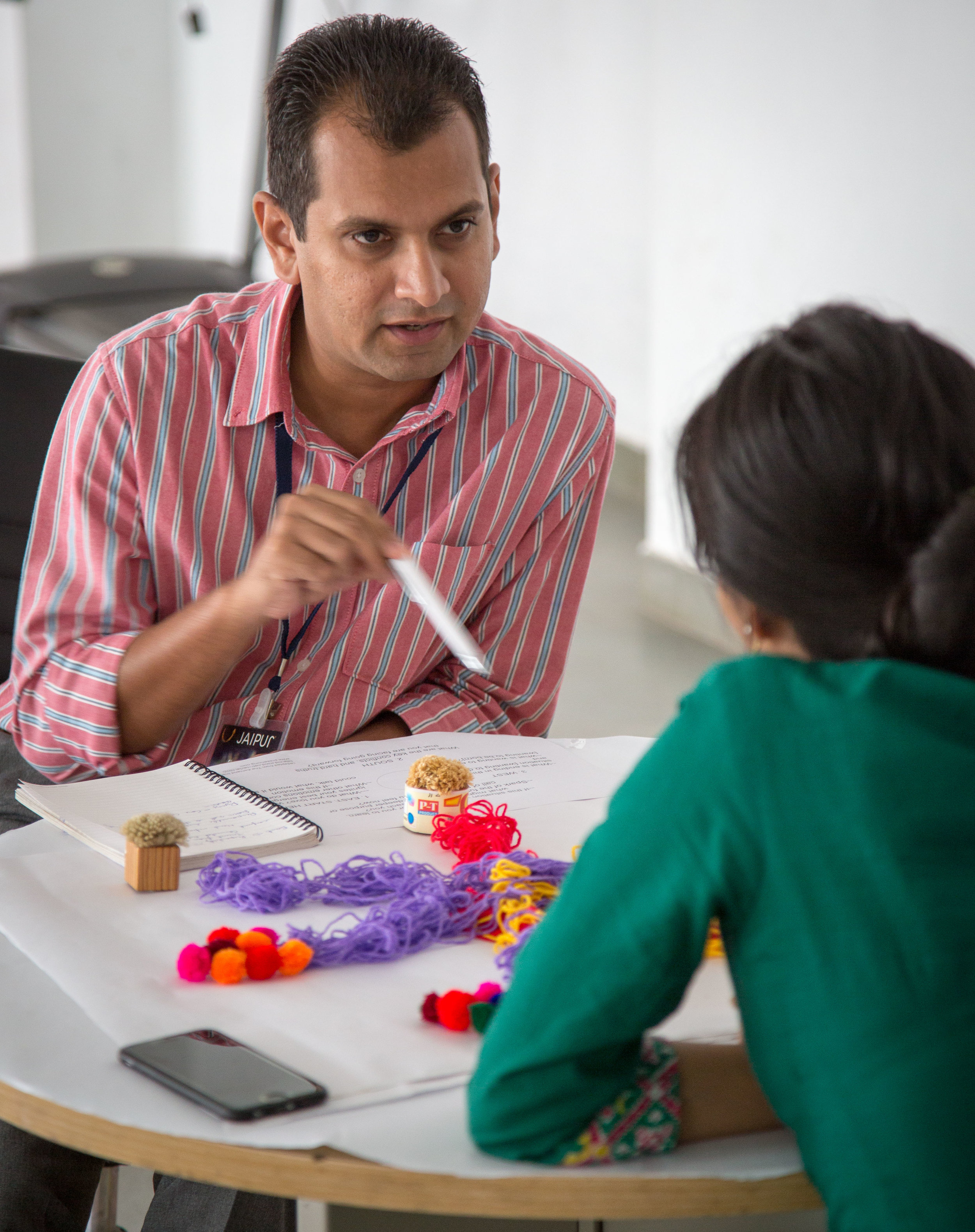
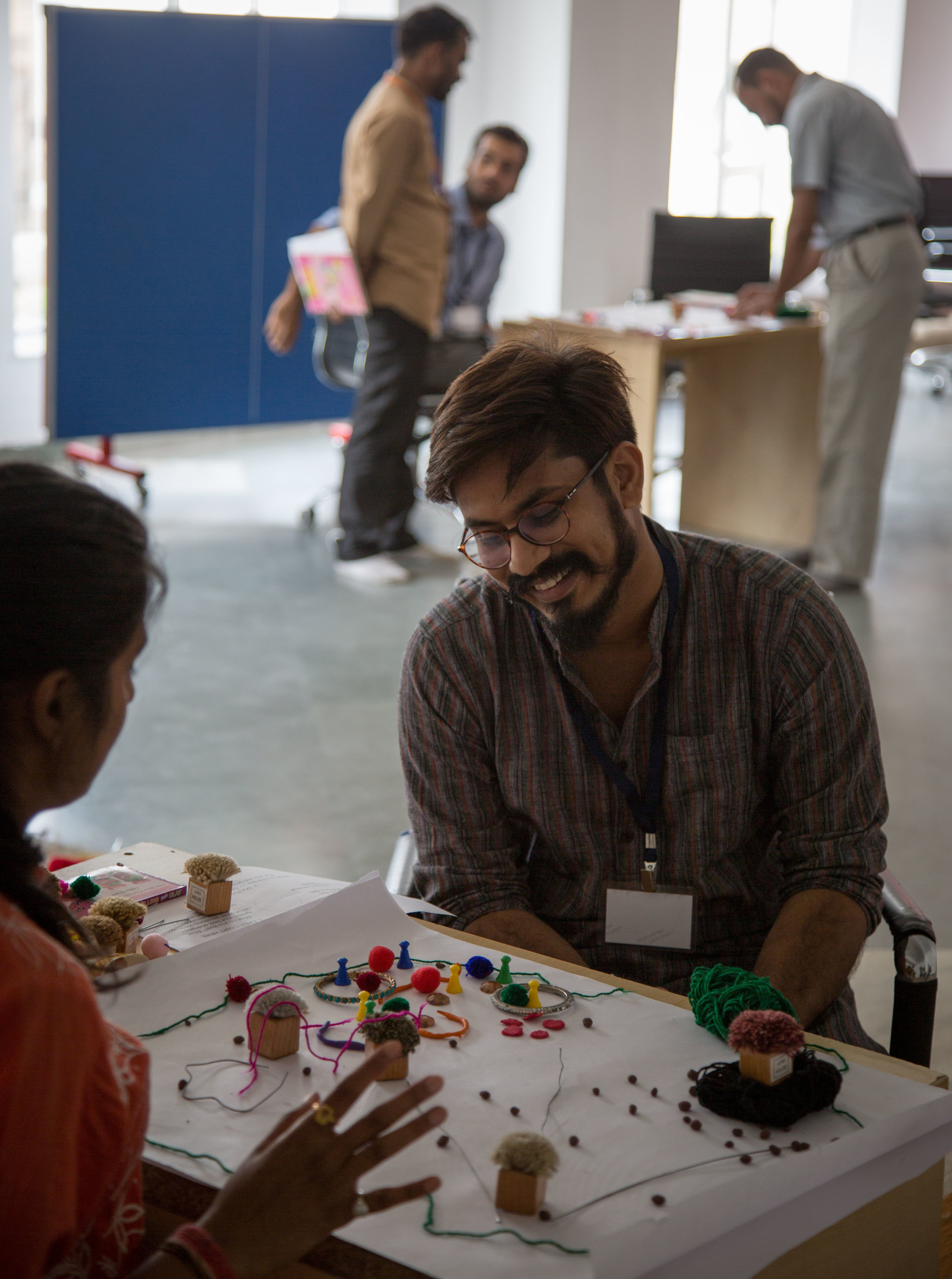
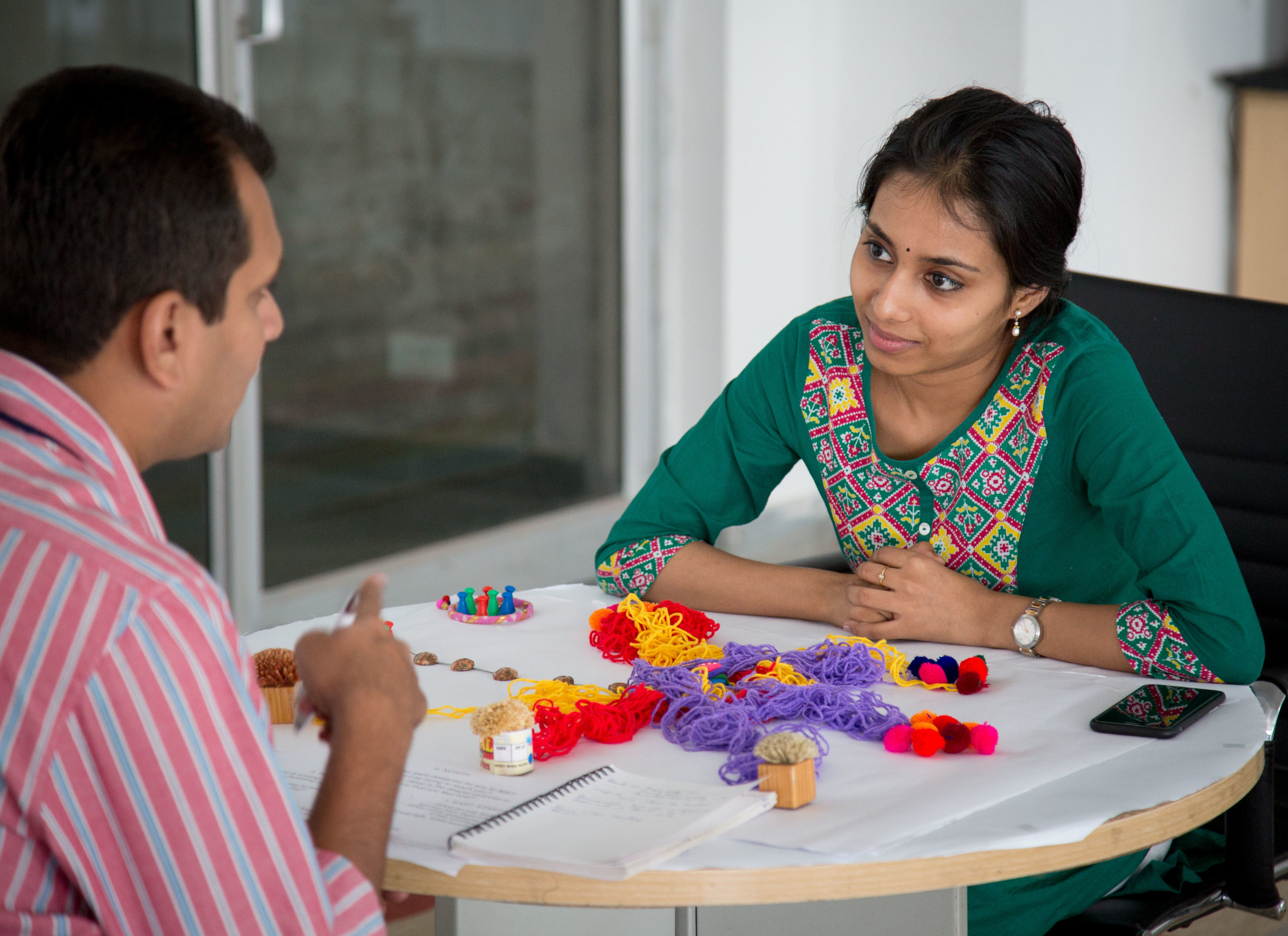
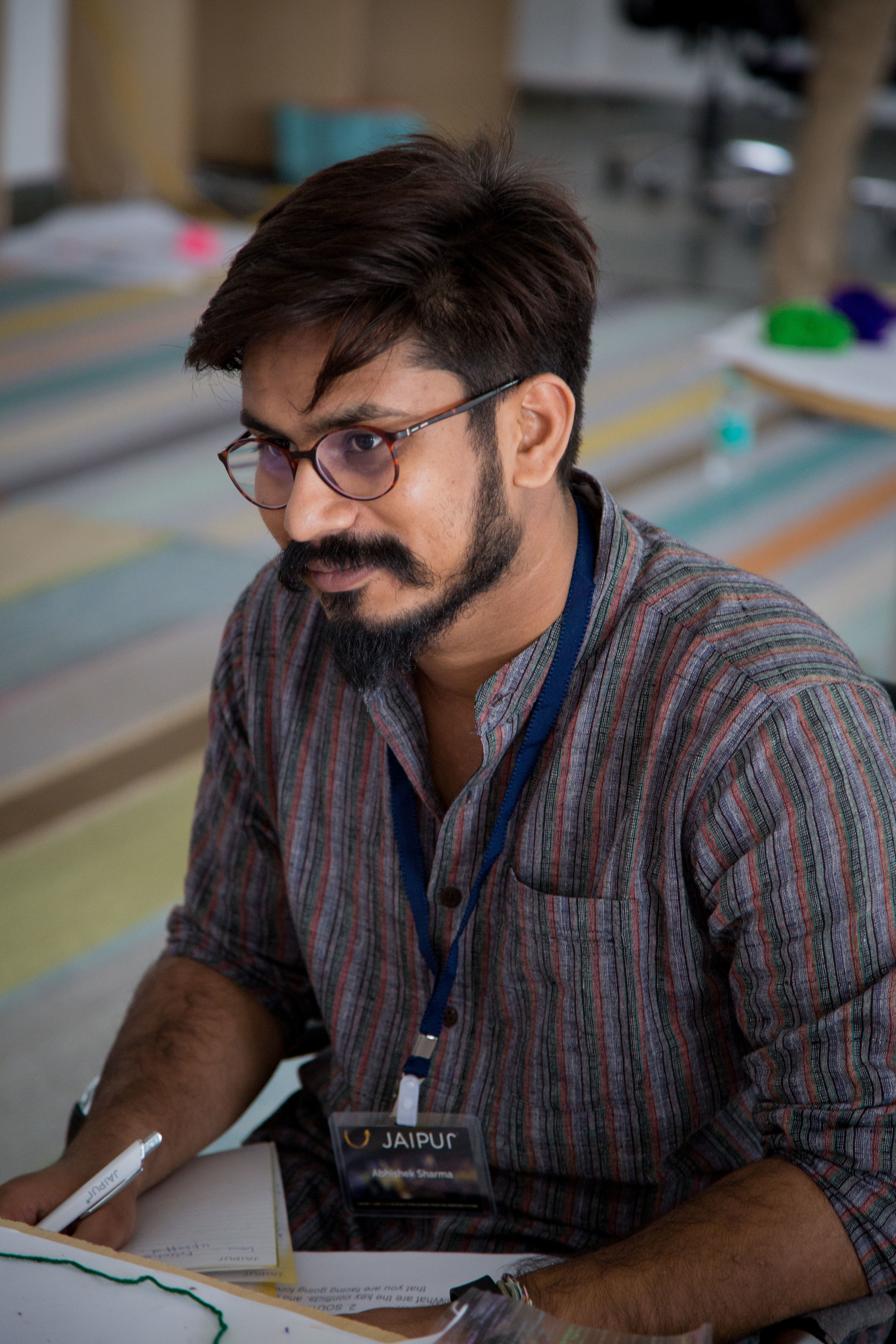
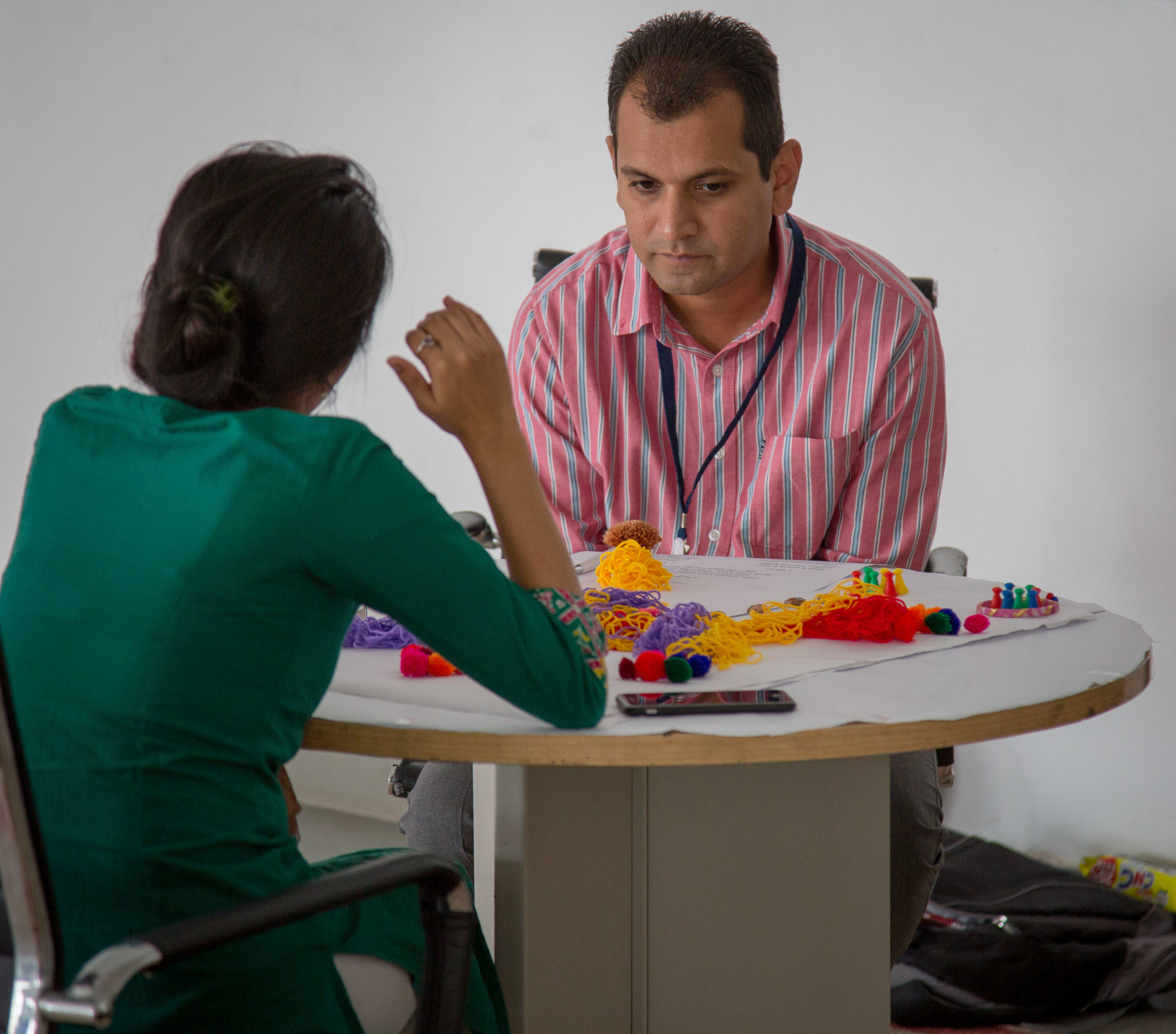
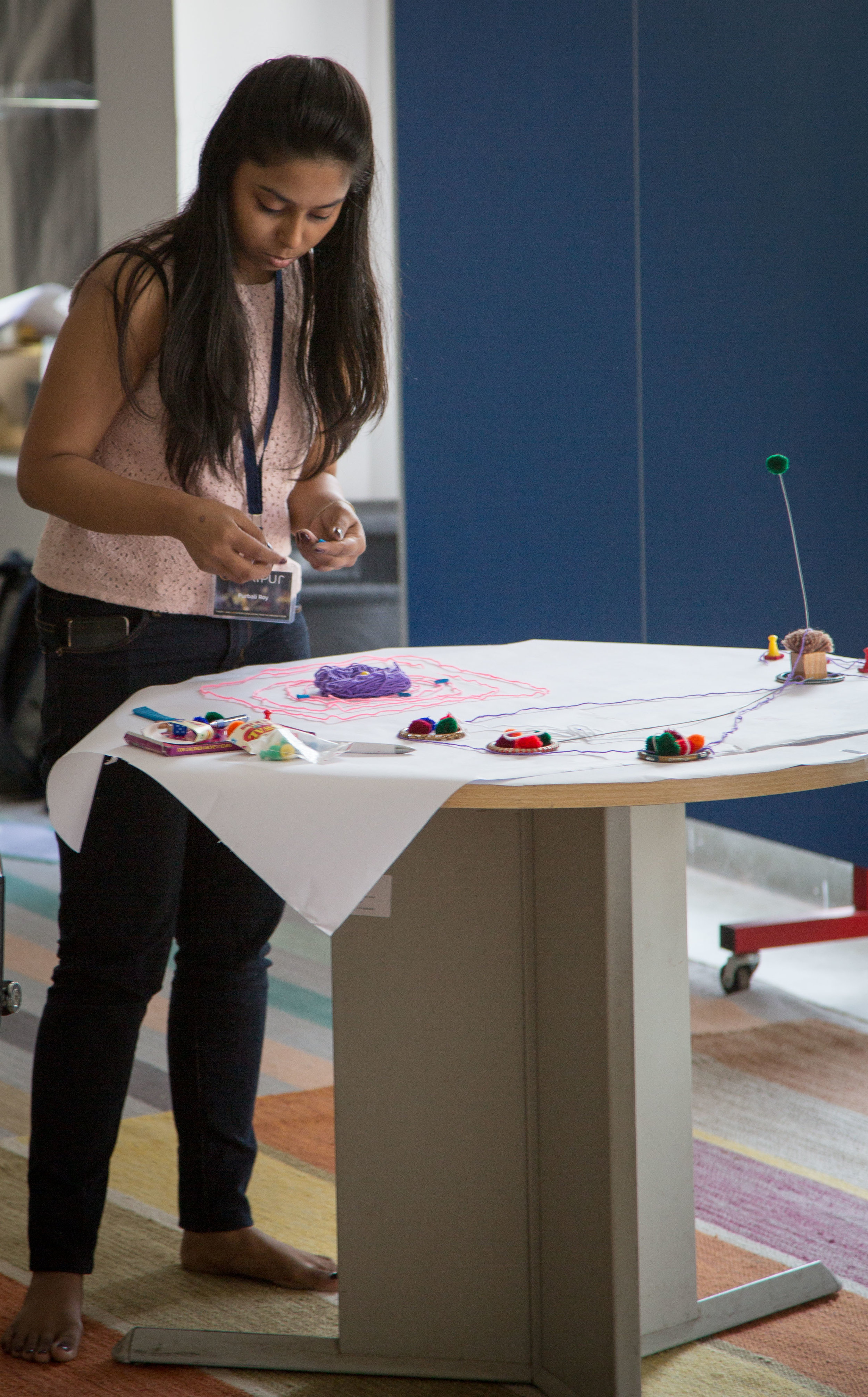

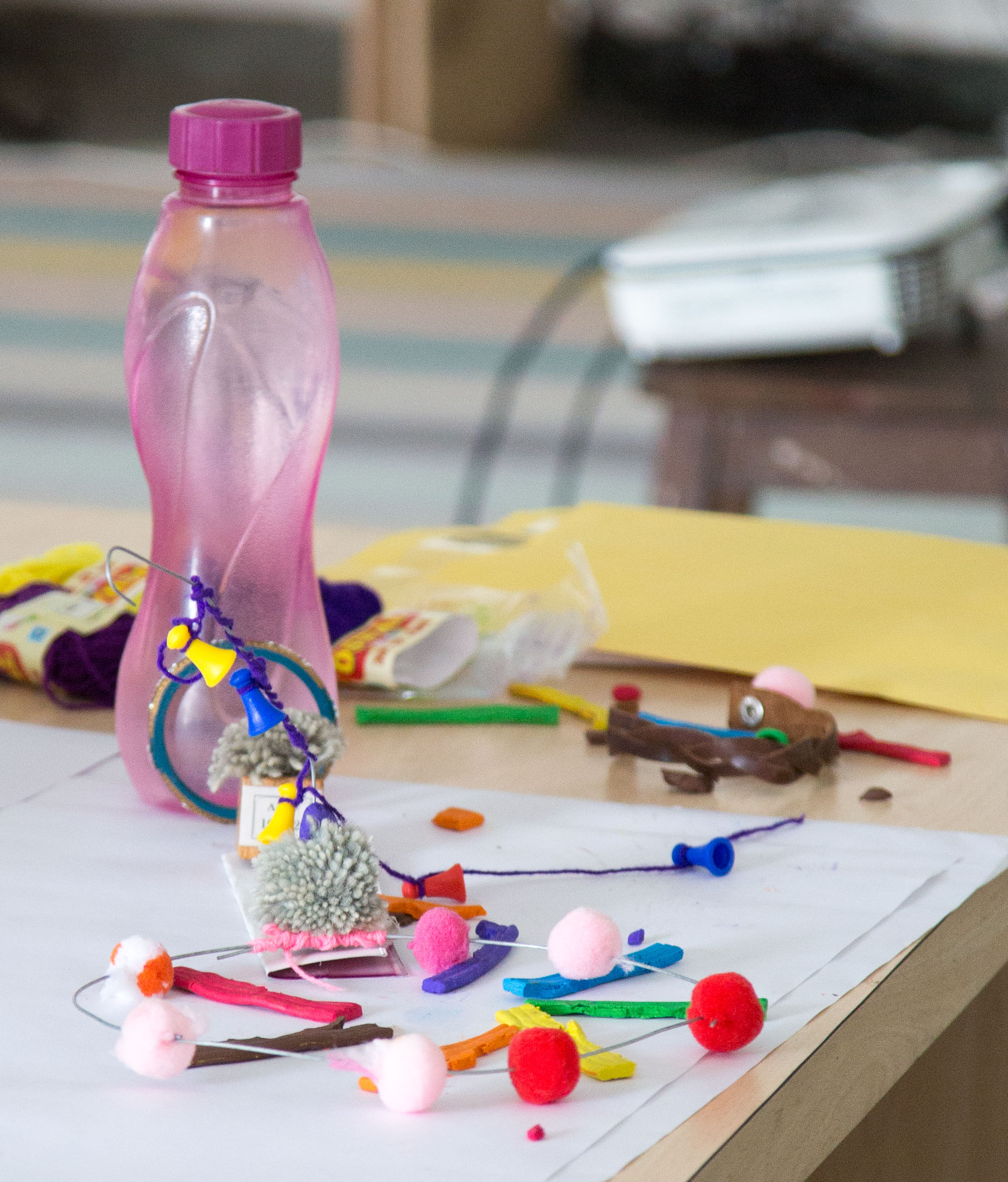
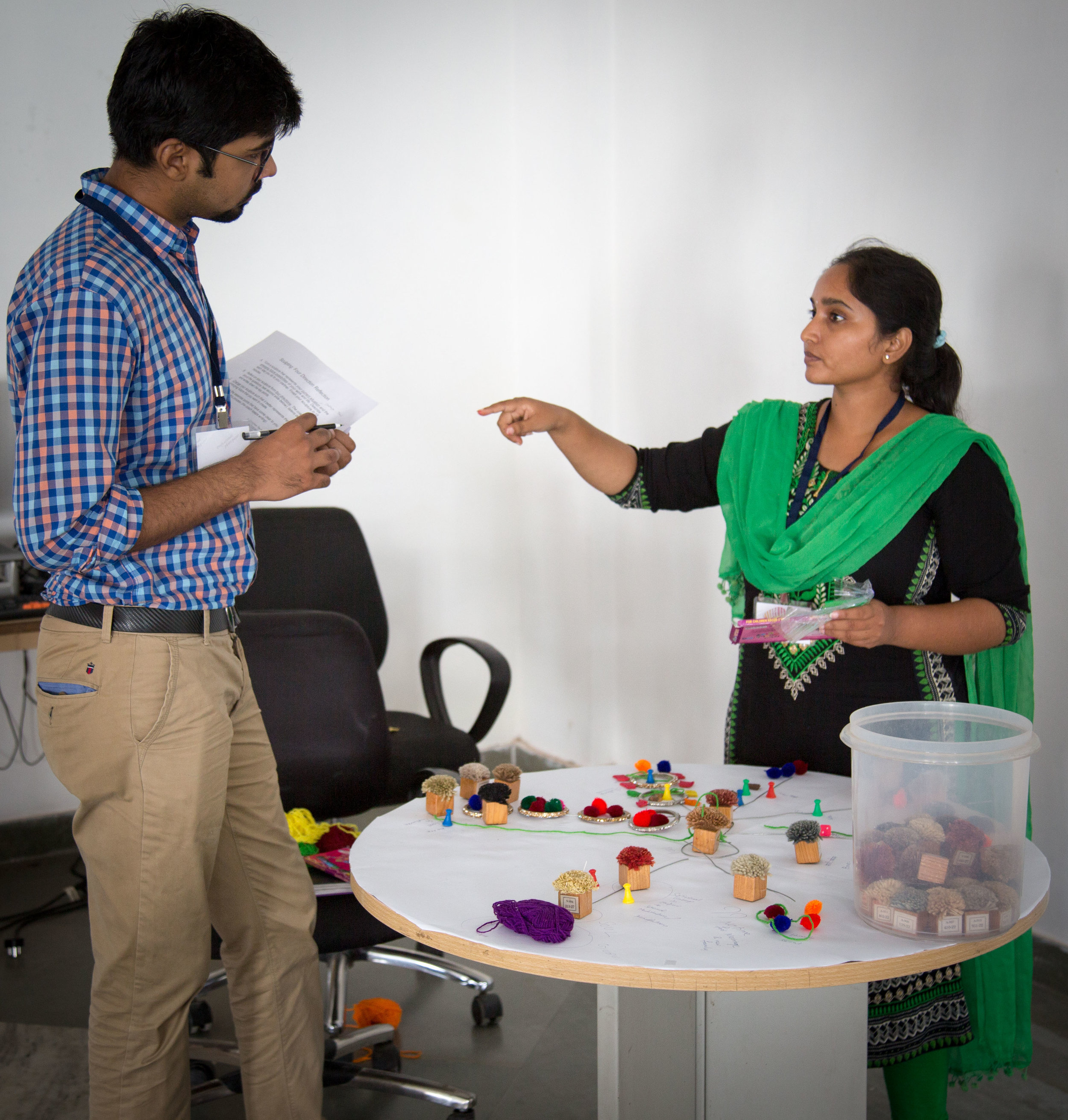
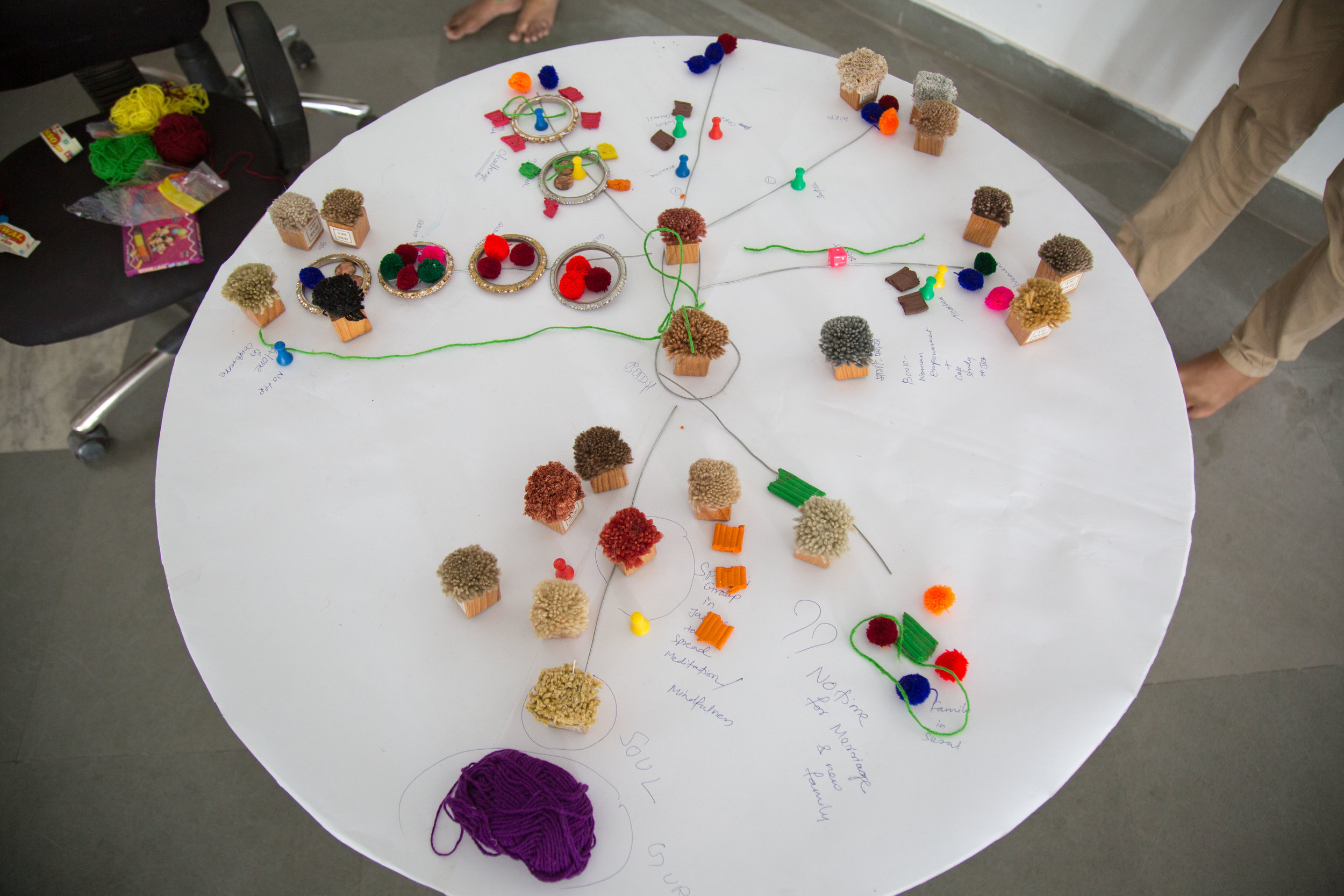
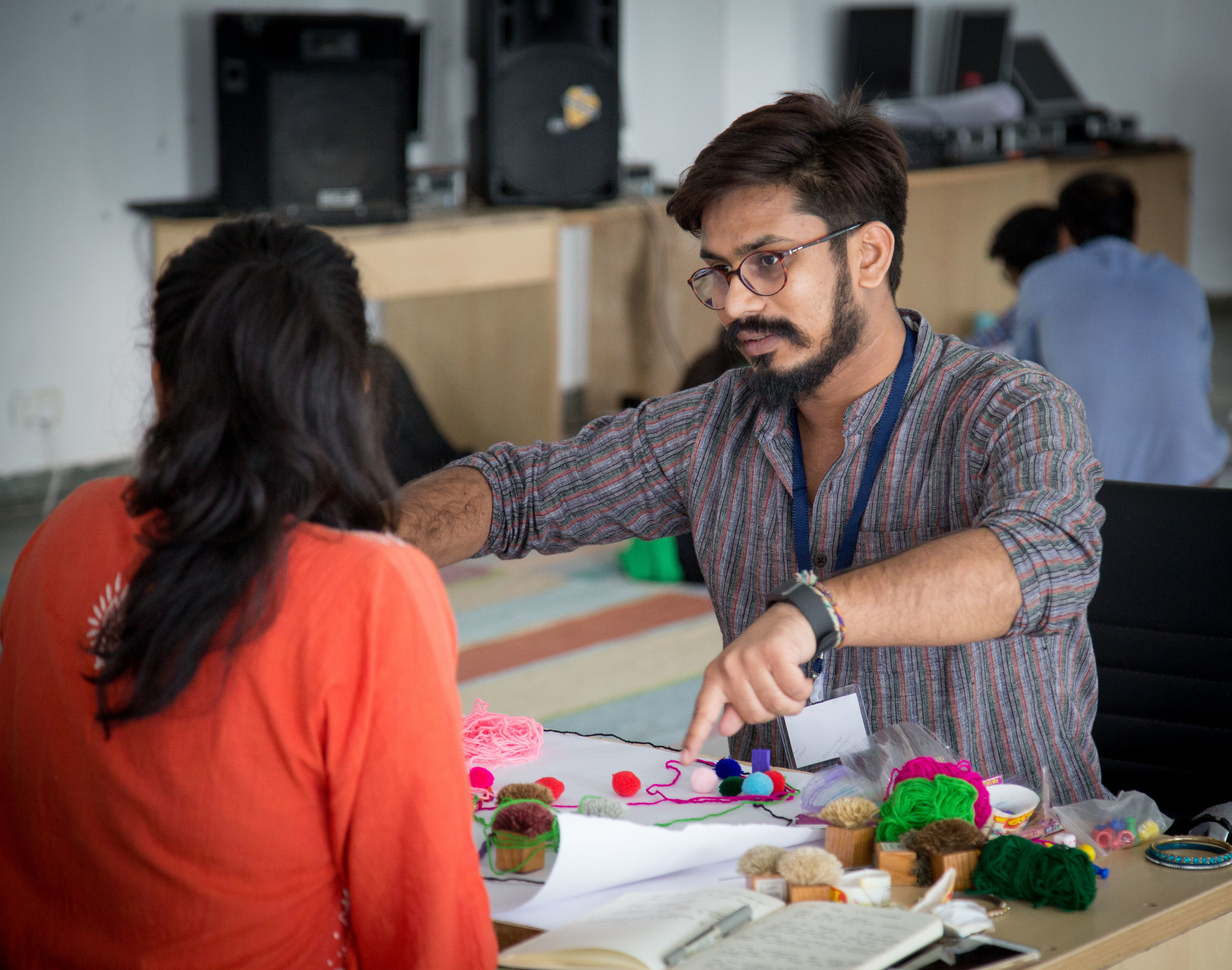
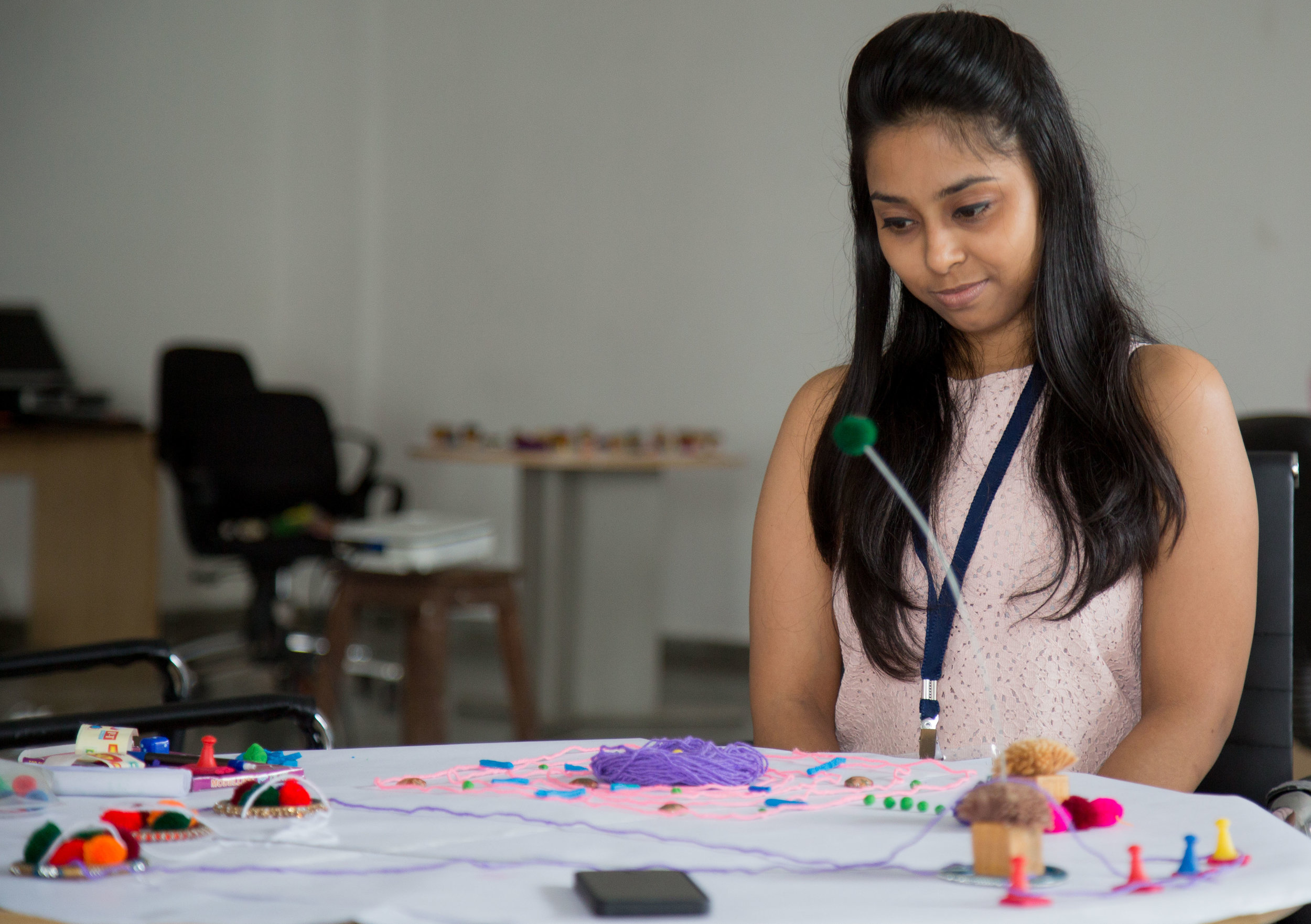
As the day came to close, I introduced u.lab. I shared that many times, as was the case in Scotland, people first use the course for their own personal and professional leadership challenges, and then take it a second time to apply it to organizational challenges. It had been a full two days and participants said they needed some time to process everything before deciding exact next steps. But the intention to continue the work together was clear.
With N.K., Swati, and Kavita, there is a core team committed to bringing U-based work into the heart of the company. With the workshop participants, there is a group with an experiential understanding of the U methods and tools, an interest in learning more, and a basic understanding of how the u.lab might support them. Indeed, this felt like the beginning of a journey, the details of which will only emerge as it unfolds. In the weeks and months ahead, we'll share more about how the Jaipur Rugs story evolves - through videos, storytelling, and other forms of media.
"In three years," N.K. told me on the final day, smiling, "I think Jaipur Rugs can be a beautiful case of how to apply Theory U in a company."
The photos in this post are a mix of my own and those taken by Vinay Joshi of Jaipur Rugs.









